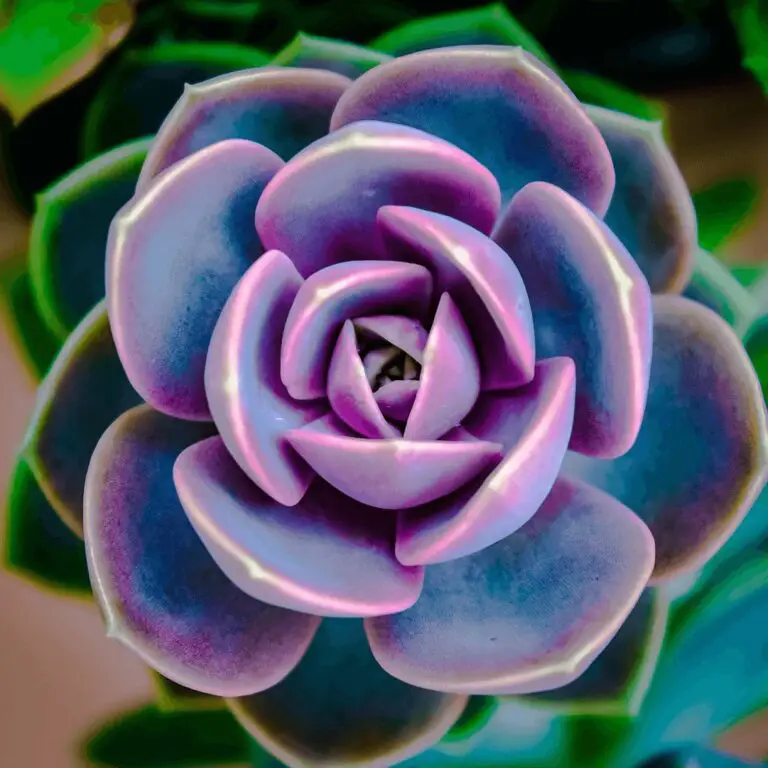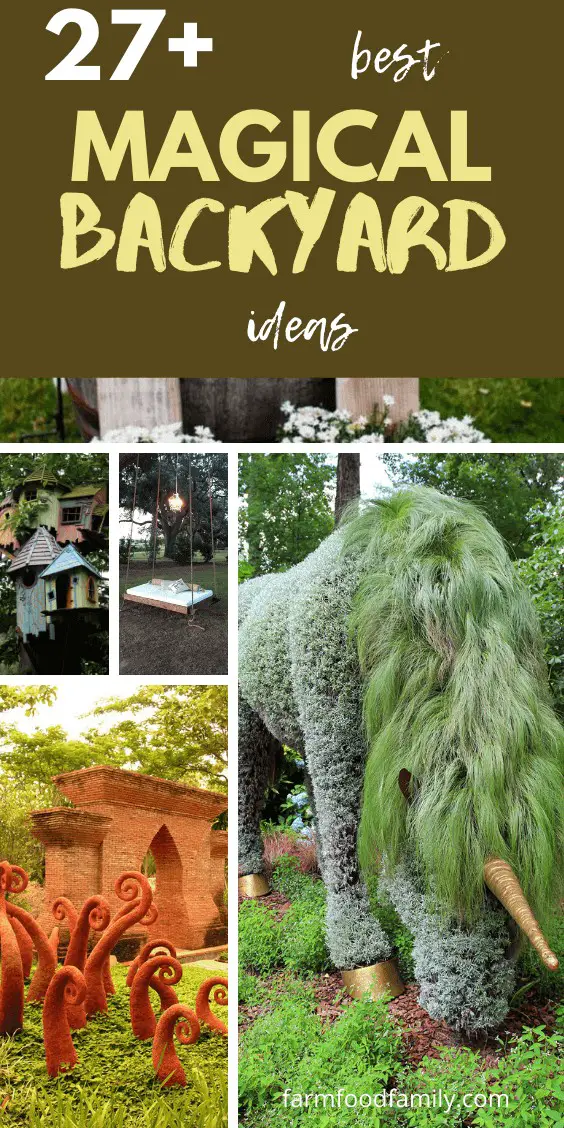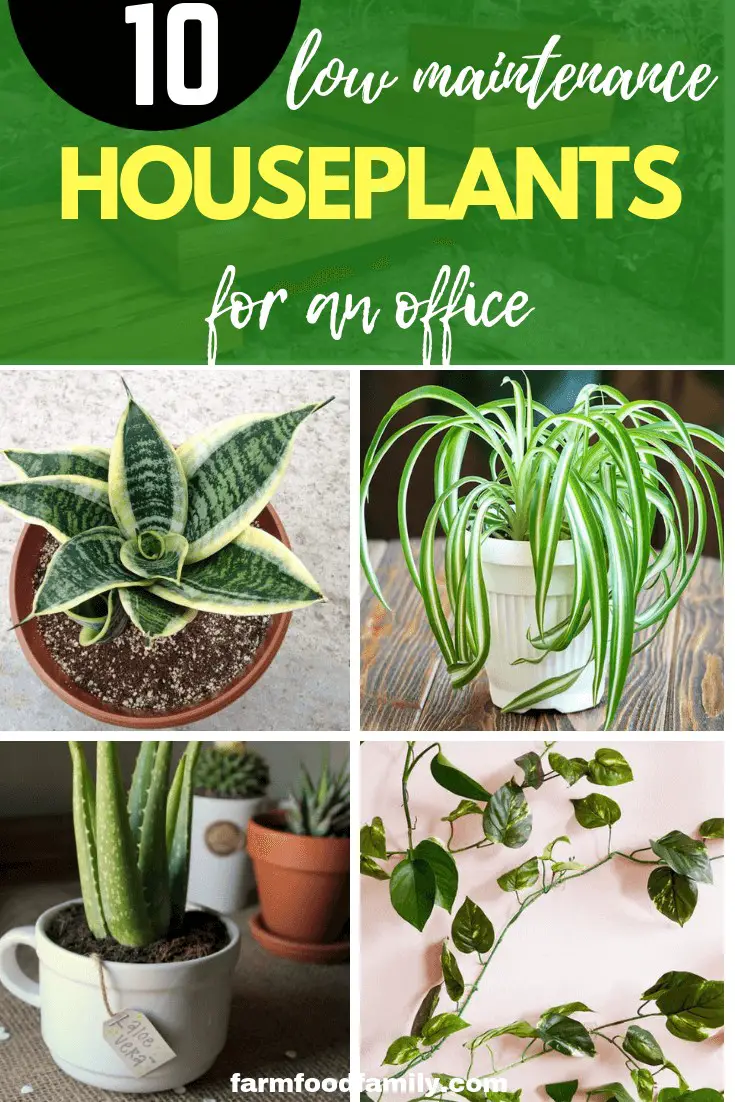42+ Types Of Trees With Names, Facts, And Pictures (Tree Species A-Z)
Trees are incredibly diverse, with thousands of species spread across the globe. While they can be grouped into categories, each type has its unique characteristics. In this article, we’ll explore the various types of trees and their distinguishing features.
When it comes to categorizing trees, there are a few key categories to consider: coniferous trees and deciduous trees.
Coniferous trees, also known as evergreens, retain their needles year-round and include species like cedars, firs, and pines. Deciduous trees, on the other hand, shed their leaves seasonally and include species like aspens, birches, and oaks.
Among the many popular types of trees, some notable examples include ash trees, aspen trees, birch trees, cedar trees, cherry trees, conifer trees, cottonwood trees, crabapple trees, crepe myrtles, cypress trees, dogwood trees, elm trees, ficus trees, fig trees, fir trees, flowering trees, fruit trees, hardwood trees, hawthorn trees, hickory trees, juniper trees, lilac trees, lime trees, locust trees, mahogany trees, mango trees, maple trees, mulberry trees, oak trees, palm trees, pear trees, pecan trees, pine trees, plum trees, redbud trees, redwood trees, spruce trees, weeping willow trees, sycamore trees, teak trees, and walnut trees.
While this is not an exhaustive list, it gives you a sense of the incredible diversity that exists among tree species. In conclusion, understanding the different types of trees can be a fascinating journey, and there’s always more to learn about these remarkable organisms.
Category of trees
Coniferous trees
Coniferous trees are a type of evergreen that stand out due to their unique foliage. Unlike deciduous trees that shed their leaves seasonally, conifers keep their needle-like leaves year-round. This characteristic is shared among species like pines, cedars, and Christmas trees.
Deciduous trees
Hardwoods, a category of trees, are characterized by their annual shedding of foliage during the fall season. One of the most notable features of hardwoods is their diverse range of leaf shapes and appearances, which can be quite unique and varied.
Popular Types of trees
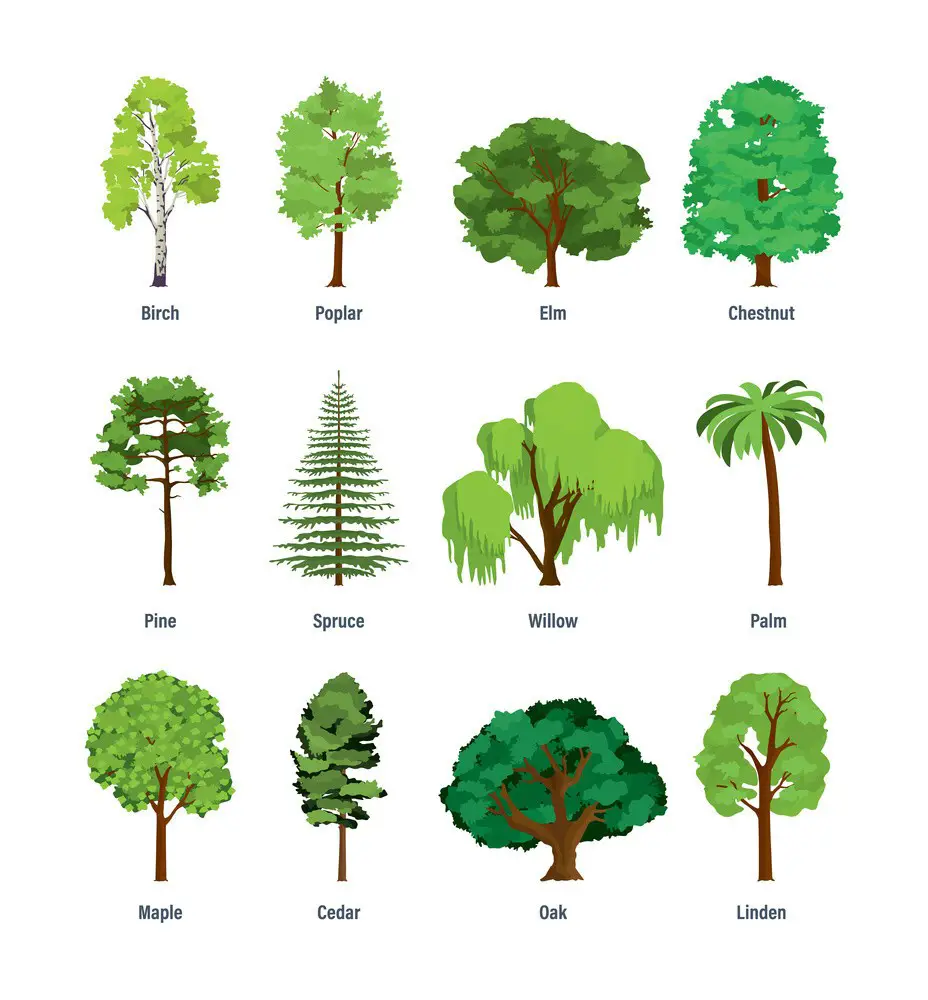
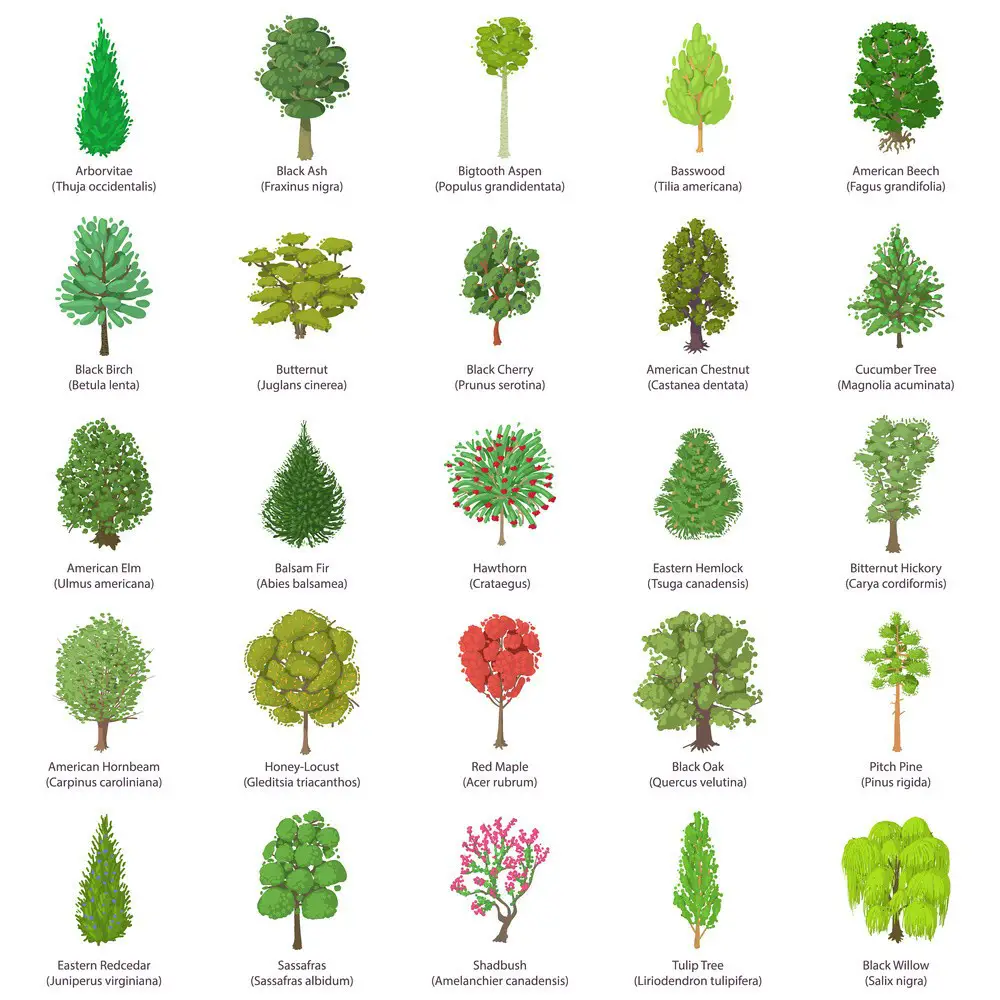
Ash trees (Fraxinus)
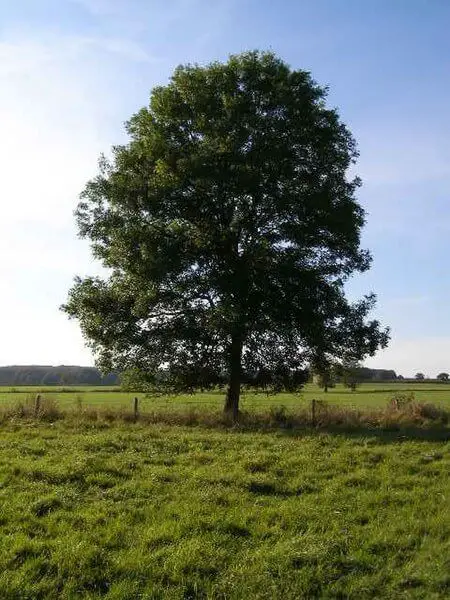
In North America, a popular choice for landscaping is the ash tree, which belongs to the olive family. This versatile species boasts over 60 varieties, with black, green, and white ash being the most sought after. One of its defining characteristics is its resilience – it’s drought-tolerant and can retain its foliage year-round. As fall approaches, the leaves transform into a vibrant display of yellow and burgundy hues. Interestingly, female trees produce winged fruits, while males do not.
A distinguishing feature of mature ash trees is the development of diamond-shaped ridges on their bark.
Aspen trees
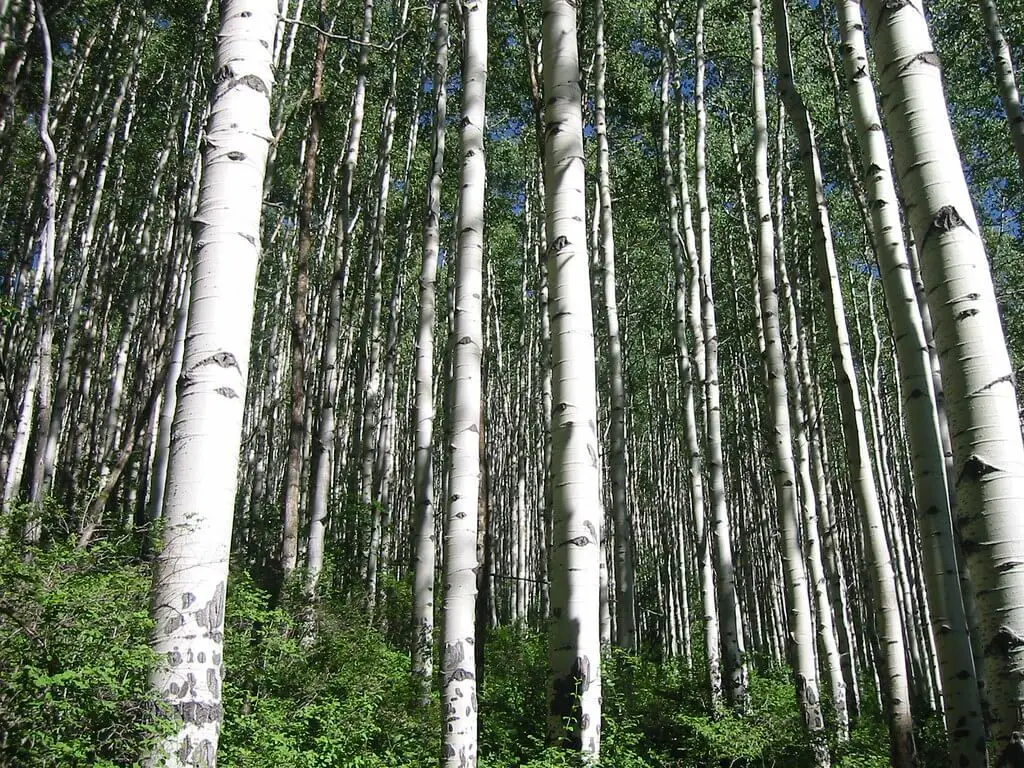
In North America, the aspen tree reigns supreme. Its unique appearance is characterized by a tube-like shape, soft white trunks, and vibrant yellow foliage in the fall. One of its most fascinating features is that each tree in a group is essentially a genetic duplicate, earning them the nickname ‘clone’ due to their uniform appearance.
The aspen’s impressive rooting system allows it to spread rapidly even after being chopped down.
This remarkable ability makes it notoriously difficult to eradicate the species altogether.
Birch trees
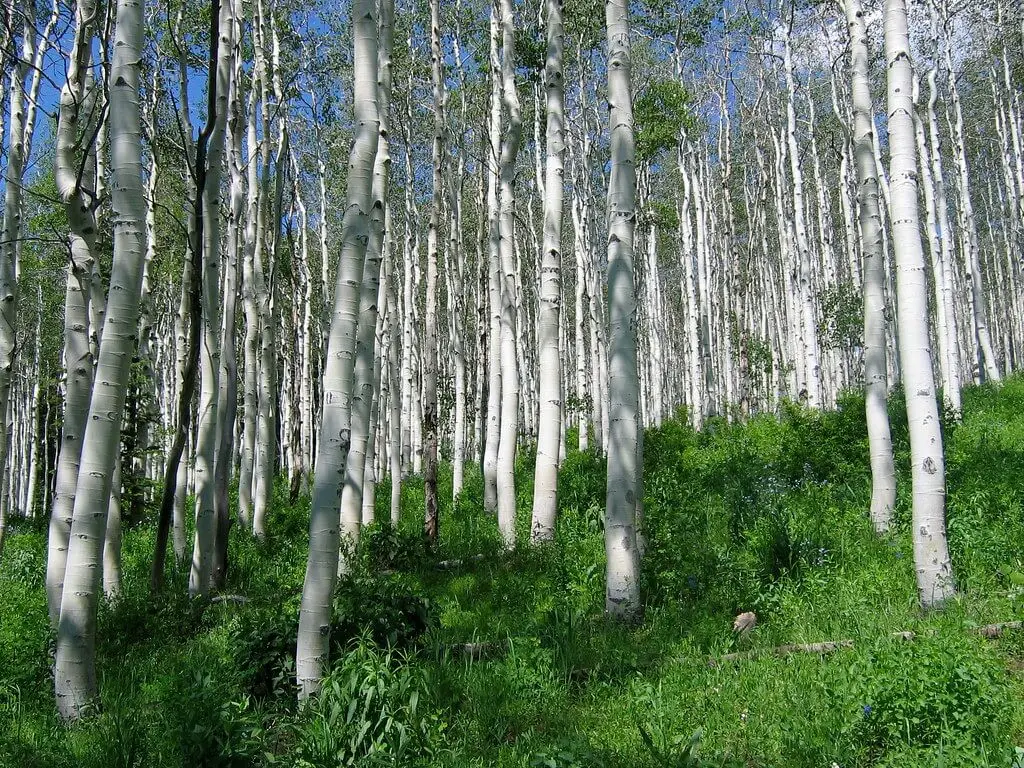
One of the most fascinating aspects of birch trees is their role as pioneers of sorts, emerging on the scene just after the glaciers of the ice age receded. Belonging to the Betula genus, with a whopping 50+ species to their name (18 of which can be found in North America alone), these trees are instantly recognizable thanks to their distinctive papery white bark and irregularly shaped black-brown furrows.
While they may not be as long-lived as other hardwoods, which can thrive for centuries, birch trees have a certain charm that makes them a popular choice for winter landscapes. Despite their relatively short lifespan of just 20 years (compared to the 100+ years some hardwoods can live), birch trees are still a beloved and iconic part of many natural environments.
Cedar trees (Cedrus)
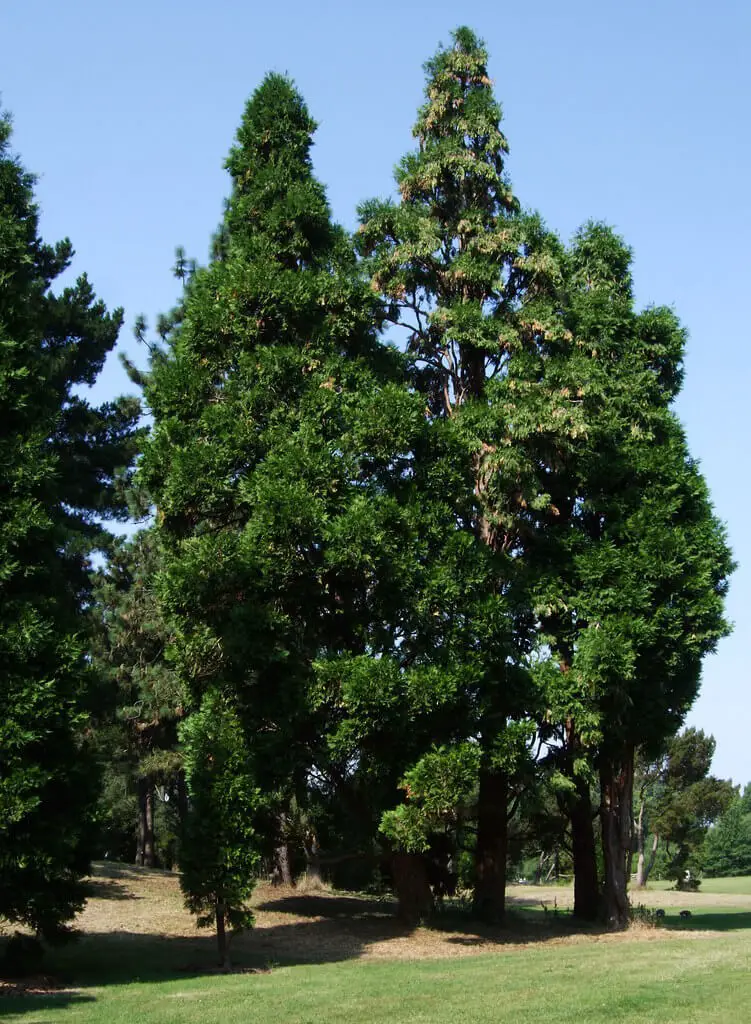
A staple of winter landscapes, Fraser Firs are renowned for being used as Christmas trees. Their impressive size and evergreen nature make them a common sight in streets, parks, gardens, and boulevards. Originally native to the Himalayas and the Mediterranean, this species has been cultivated in the US as an ornamental tree due to the lack of native species in the country.
One of its defining characteristics is its ability to retain its green foliage year-round, a feature that’s further enhanced by its distinctive holiday spice aroma.
Cherry trees
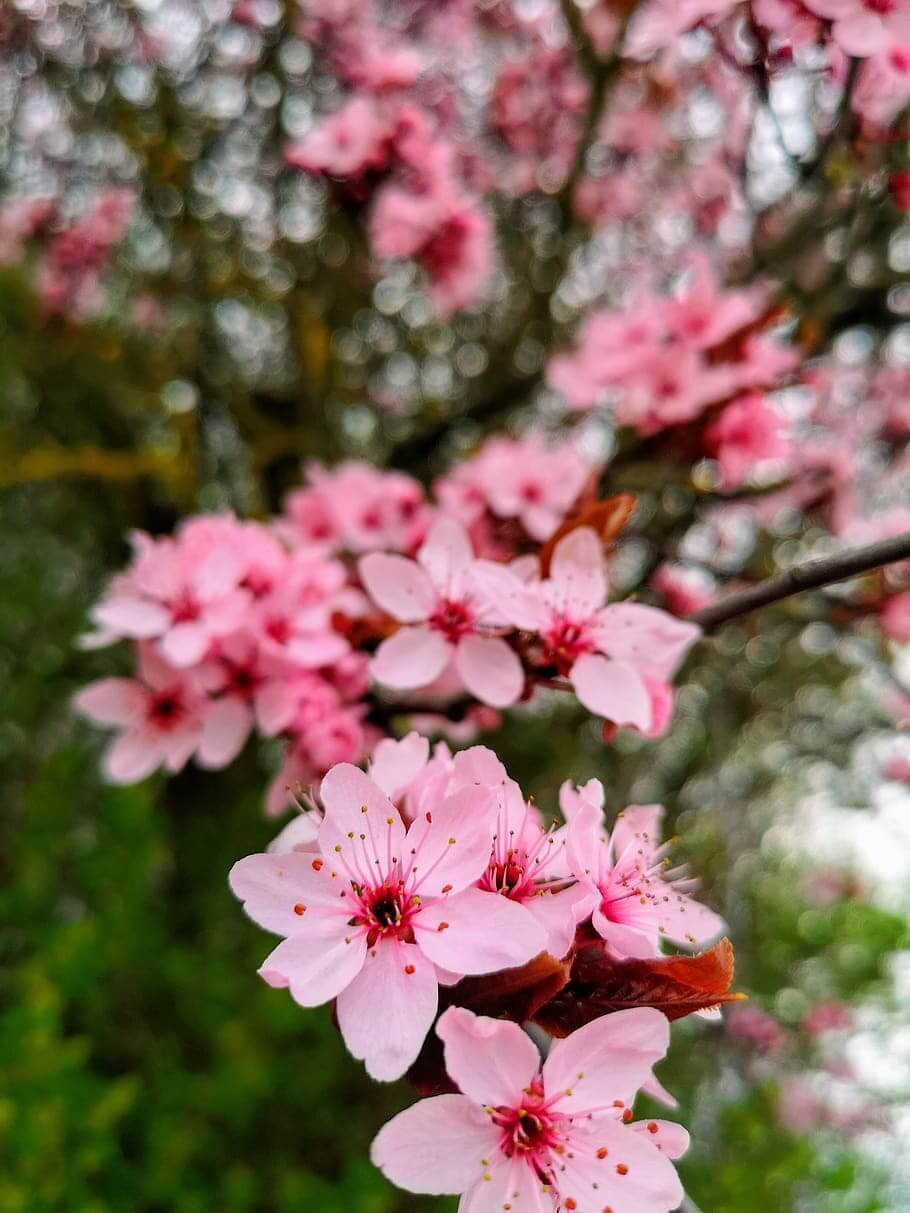
Cherry trees have a relatively short lifespan, with most species living for around 20 years. However, the black cherry is an exception, with some individuals living up to 250 years. This remarkable longevity has led to its association with spring, as it’s one of the first trees to bloom in late March or early April. In fact, many spring events and festivals are dedicated to this iconic tree, particularly in the US and Japan.
Some cherry trees produce edible fruits, while others are grown solely for their ornamental value, like the stunning cherry blossoms. Interestingly, all cherry blossoms are technically edible and are often dried to create a popular tea. When left unchecked, these trees can grow quite large, reaching heights of up to 80 feet in the wild. Their sturdy black-brown trunks provide a striking contrast to their delicate pink blooms.
Conifer trees
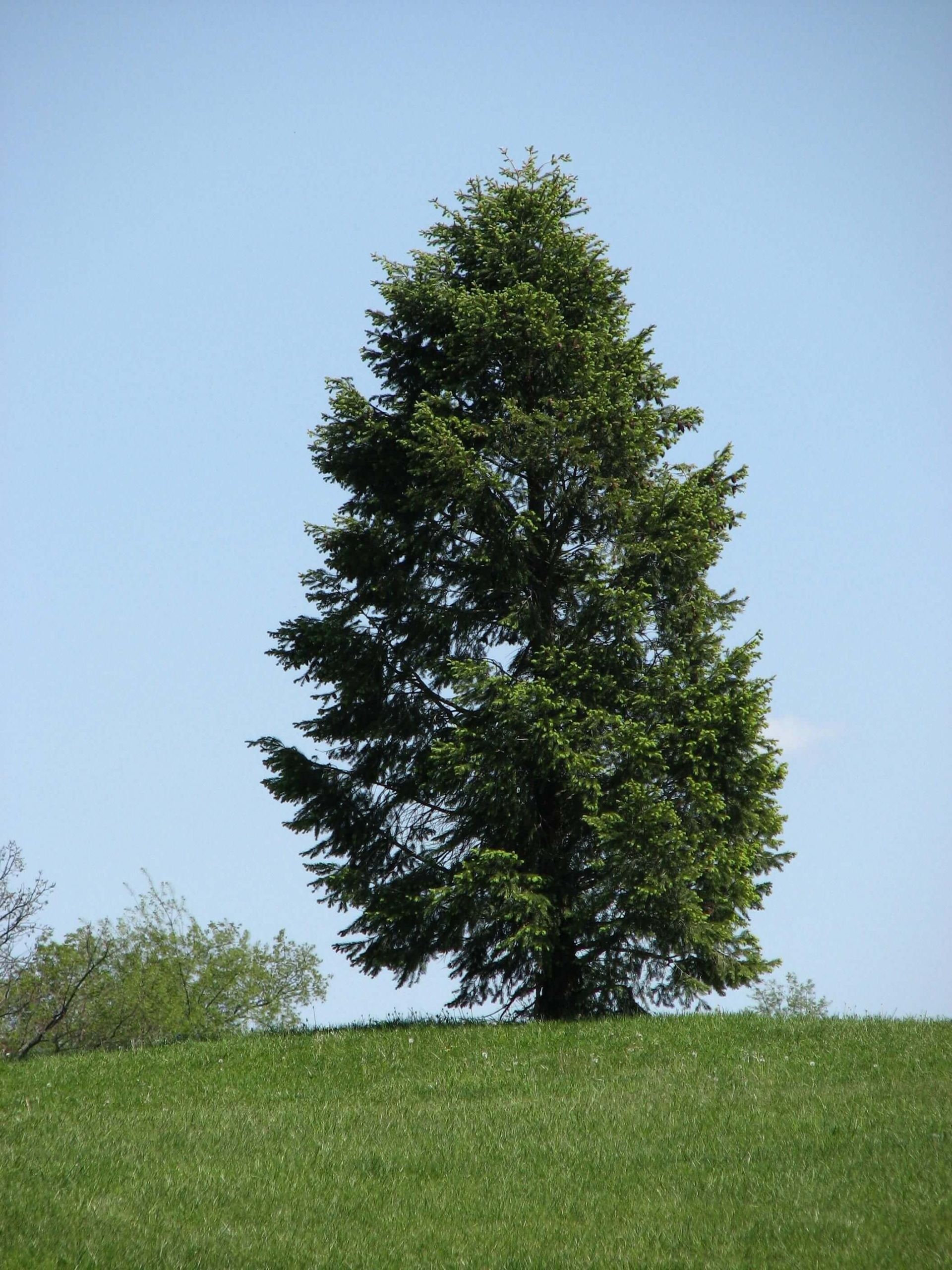
With an astonishing presence on every continent except Antarctica, gymnosperms form one of the largest groups, comprising over 800 species. A notable characteristic of this group is their lack of floral and fruit production. Furthermore, they are renowned for their remarkable height, with some species reaching extraordinary dimensions. The iconic Giant Sequoias of North America are a prime example, standing tall as some of the tallest growing trees in the world.
Moreover, these trees hold significant economic value, providing a reliable source of high-quality timber and contributing to paper production.
Cottonwood trees (Populus deltoids)
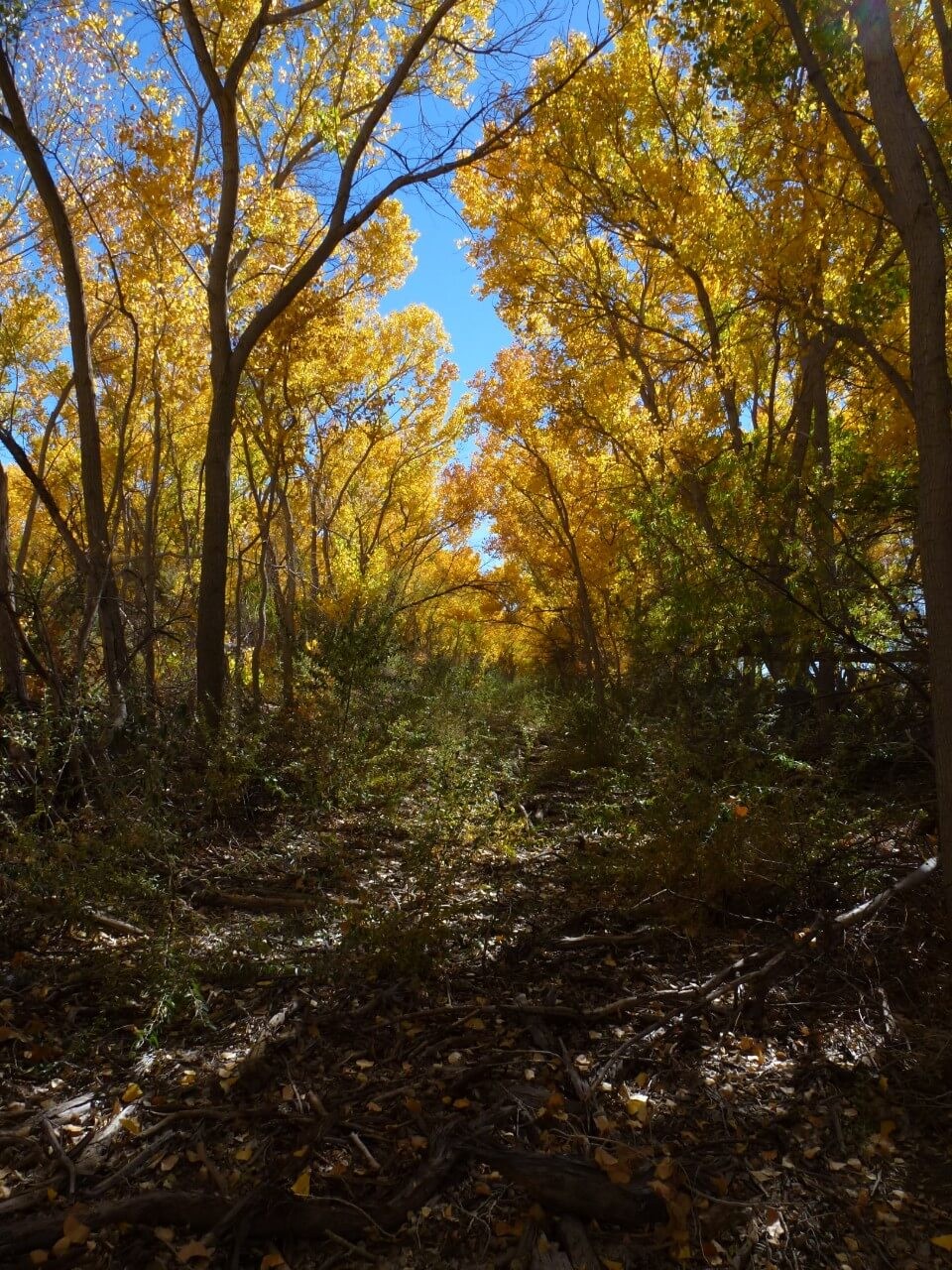
The Black Cottonwood (Populus trichocarpa) is a deciduous tree that boasts impressive growth rates, albeit with a relatively shorter lifespan compared to other species. Its native range spans Canada, Mexico, and the United States. This adaptable tree thrives in environments near streams and lakes, but can also be cultivated at high elevations. One of its defining characteristics is its smooth, yellow-green bark, which gradually transforms into a lovely ash gray hue as it matures.
The tree’s long, triangular leaves feature toothed edges, adding to its overall aesthetic appeal. While it is often prized for its ornamental value, the Black Cottonwood also has practical applications, such as being used in the manufacture of wooden boxes.
Crabapple trees
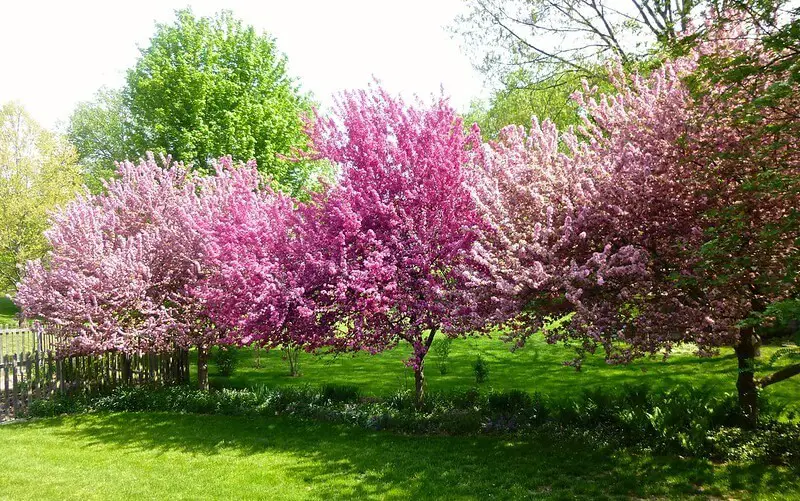
Any apple tree that produces fruits measuring two inches in diameter or larger can be classified as a crabapple. One of its most striking features is the multicolor display it presents during the summer months, with dark-colored buds giving way to vibrant flowers. The leaves of this tree are a deep green hue during the spring and summer, before transitioning into a stunning palette of red, bronze, yellow, and purple shades in the fall.
While its fruits may be smaller than those of some other apple varieties, they’re still highly prized for use in an array of culinary delights, including tarts, jams, ciders, and other sweet preserves. Interestingly, crabapples have a long history that dates back to ancient times – in fact, this particular variety has origins tracing back some 6,000 years to the region of Kazakhstan in Asia.
Crepe myrtles trees (Lagerstroemia)
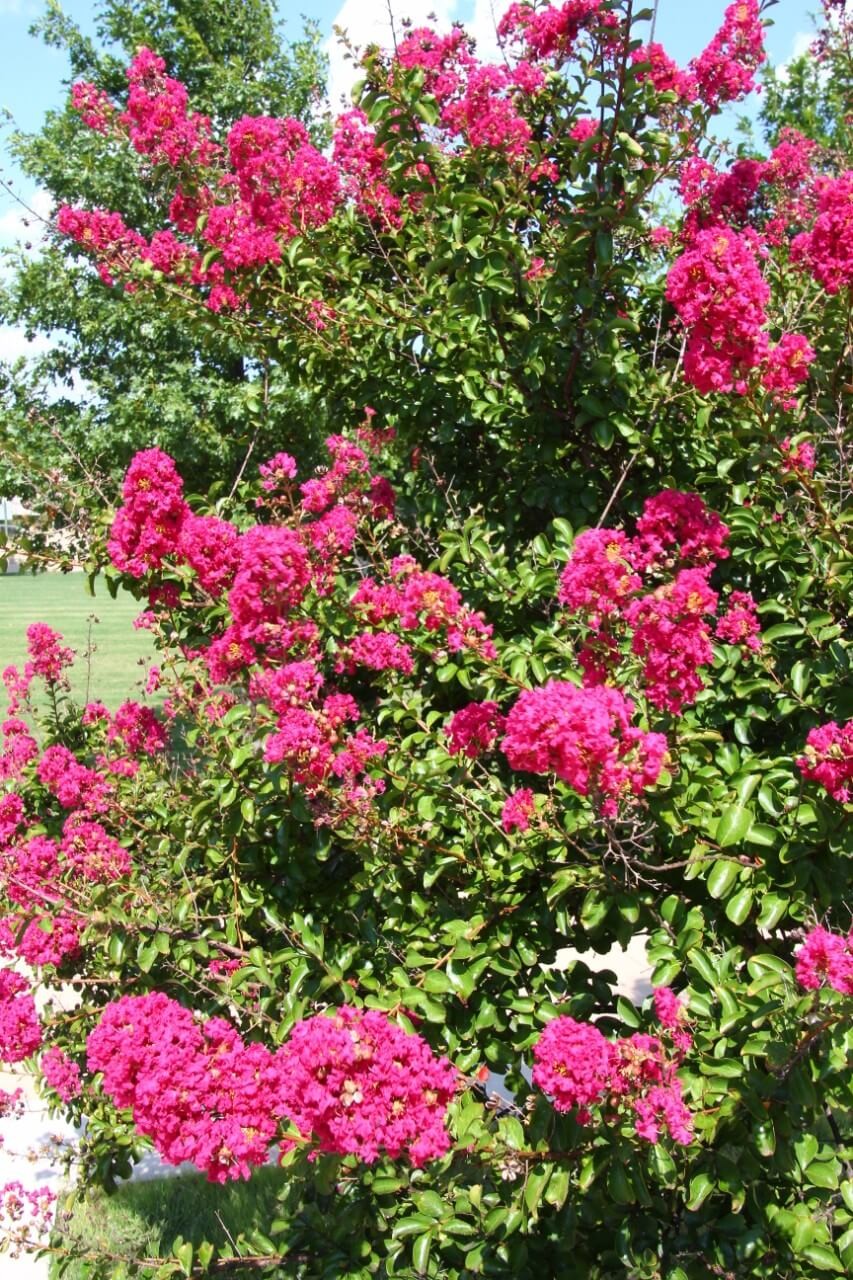
Throughout the year, these remarkable trees display an captivating visual appeal, boasting lush green foliage, showy crepe-like blooms in shades of white, lavender, and pink, and slender trunks adorned with a subtle green-brown hue. While they can thrive as ornamental shrubs in private gardens, it’s not uncommon to spot them in their full glory in public spaces like parks and streets.
Interestingly, the amount of sunlight these trees receive has a direct impact on their blooming habits – the more sun they get, the more vibrant blooms they’ll produce. Additionally, they’re surprisingly resilient and can flourish in a wide range of environments, making them a low-maintenance yet stunning addition to any landscape.
Cypress trees
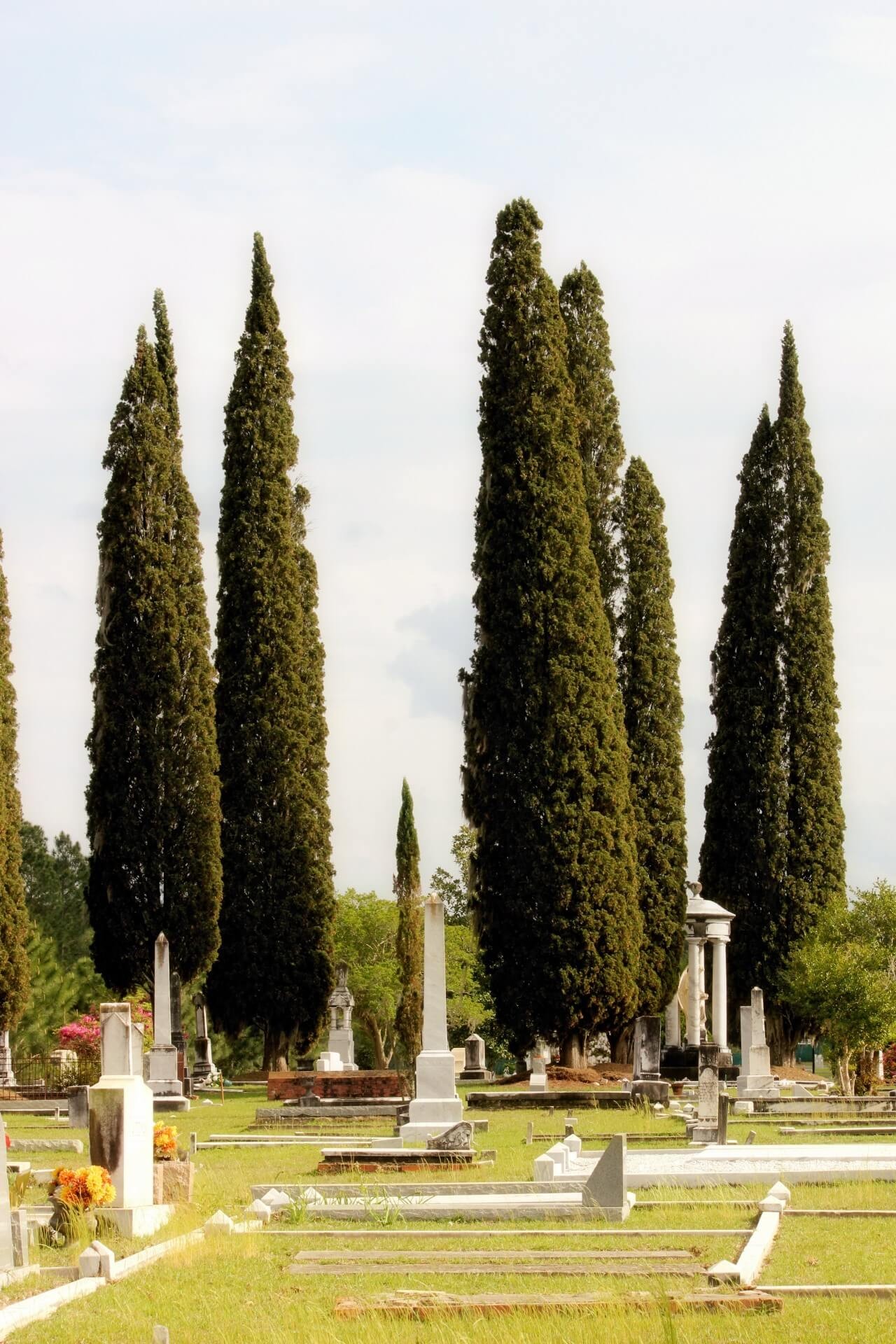
Among ornamental evergreens, the cypress stands out for its widespread use as an alternative Christmas tree, adding a touch of winter wonder to any landscape. One notable characteristic of many cypress species is their umbrella-like shape, with some varieties like the Monterey cypress growing up to 70ft tall. In contrast, smaller-growing options like the Gowen cypress provide a more compact option.
The distinctive green-blue foliage of cypresses overlaps like braids, creating a unique visual appeal. Notably, the iconic Lone cypress in California’s 17-mile drive is one of the most famous examples of this evergreen’s charm.
Dogwood trees
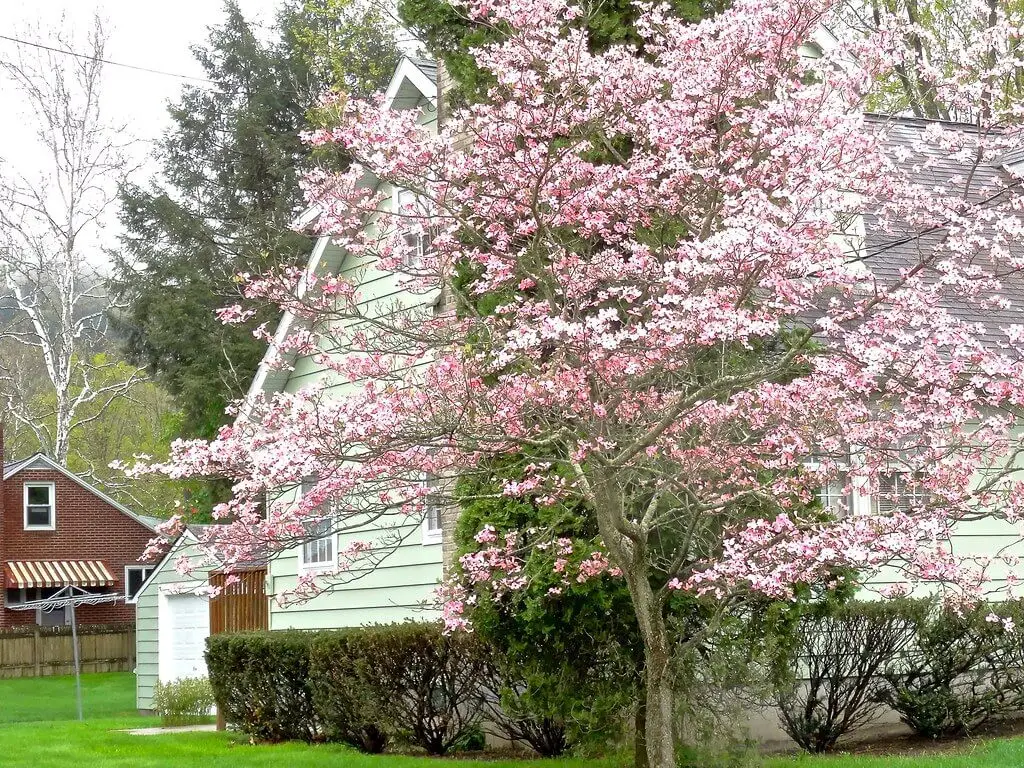
While they may be small-sized ornamental plants, they truly never fail to impress aesthetically. In spring, they produce copious amounts of delicate, white/yellow flowers that beautifully contrast with their distinctive acid gray-brown bark. What’s more, the wood of these plants is also valued for its coarseness and hardness, making it suitable for crafting tool handles, golf club heads, butchers’ blocks, mallets, and even jewelry boxes.
Elm trees
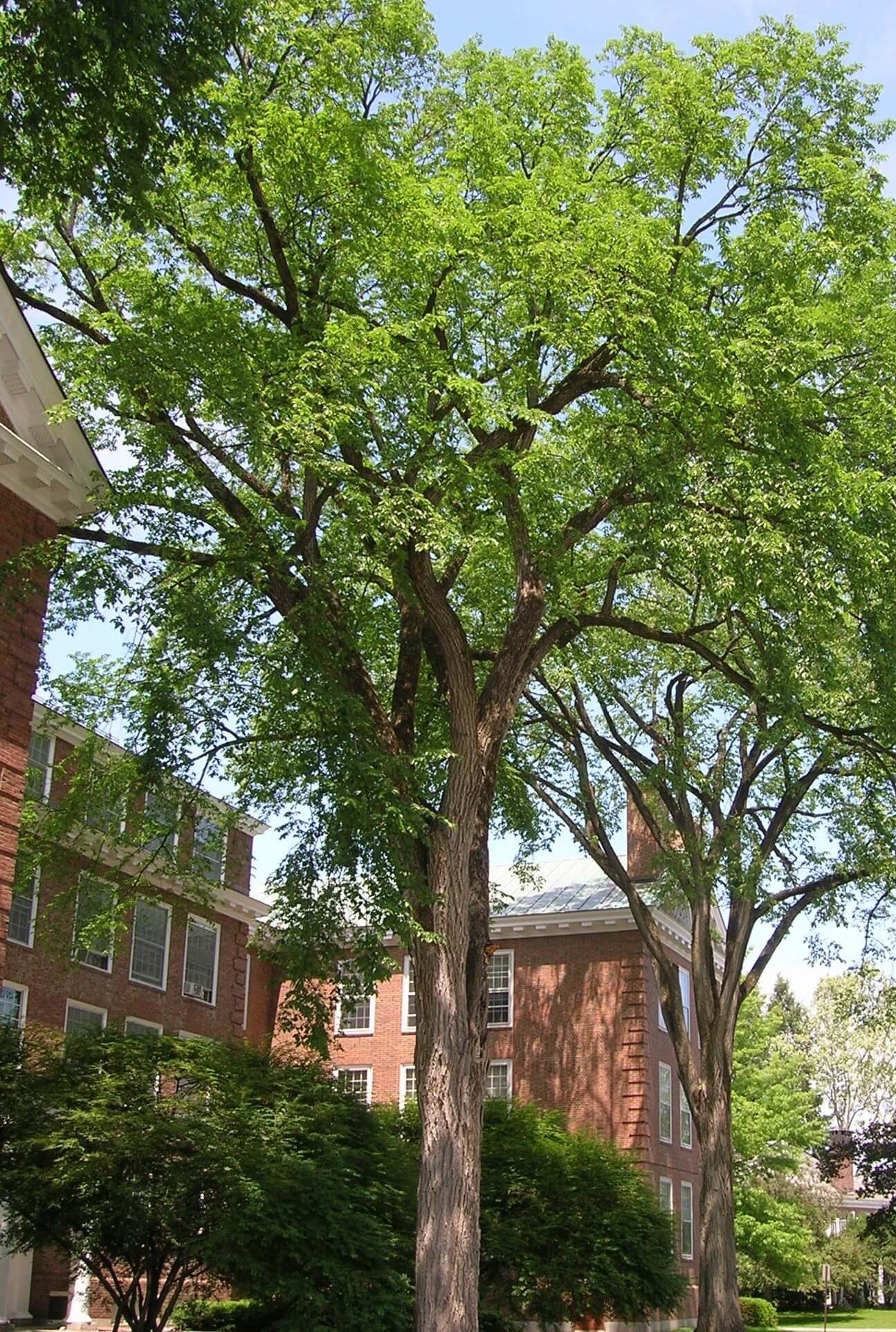
This majestic tree is a ubiquitous feature of forests worldwide, with its native range spanning Europe and Asia. The genus Elm boasts an impressive 40+ varieties, with some of the most well-known species including American, English, and Slippery Elm. Notably, the tree’s foliage exhibits a distinctive yellow-green hue that deepens in color as it matures. Furthermore, the underside of each leaf features a rugged texture that sets it apart from other arboreal specimens.
The tree’s unique gray bark is punctuated by peculiar furrows, which give way to a striking pattern of white and brown wood as it ages. This remarkable wood has a multitude of practical applications, including the creation of boxes, crates, and barrels. A testament to its versatility, Elm trees have long been prized for their durable and workable timber.
Ficus trees
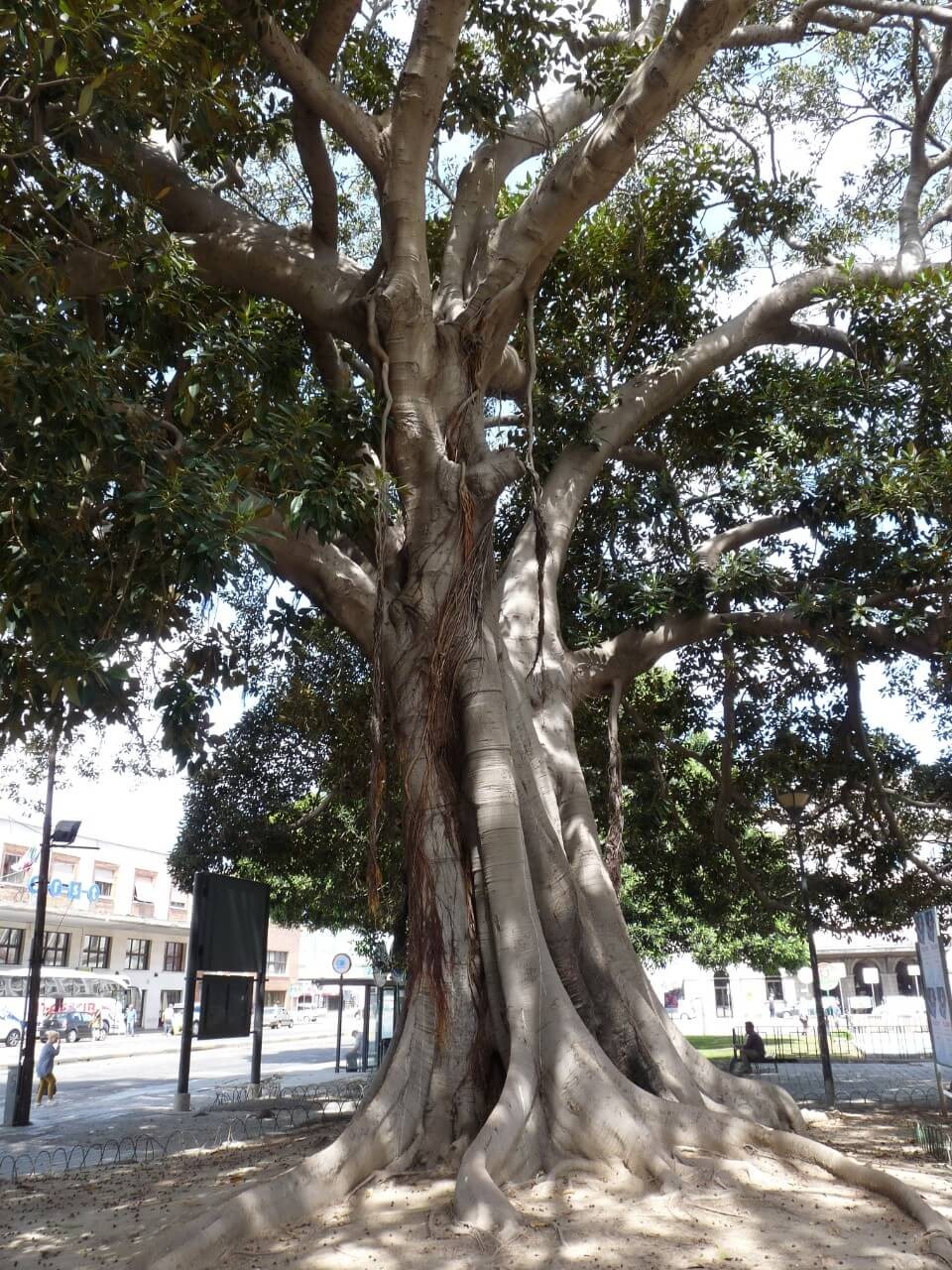
The Ficus benjamina, also referred to as the weeping fig, is distinguished by its lustrous, rich green foliage. What’s more, this species is renowned for its remarkable longevity, thriving equally well in indoor settings or their natural habitats. One of the primary advantages of Ficus benjamina is its minimal maintenance requirements and slow growth rate, making them ideal for effortless naturalization in home gardens.
The most popular varieties include Midnight, characterized by its curly and dark-toned leaves, Starlight with deep green leaves featuring white edges, and Judith, boasting deep green foliage with vibrant yellow highlights. These distinct features contribute to the species’ enduring popularity among botanists and enthusiasts alike.
Fig trees
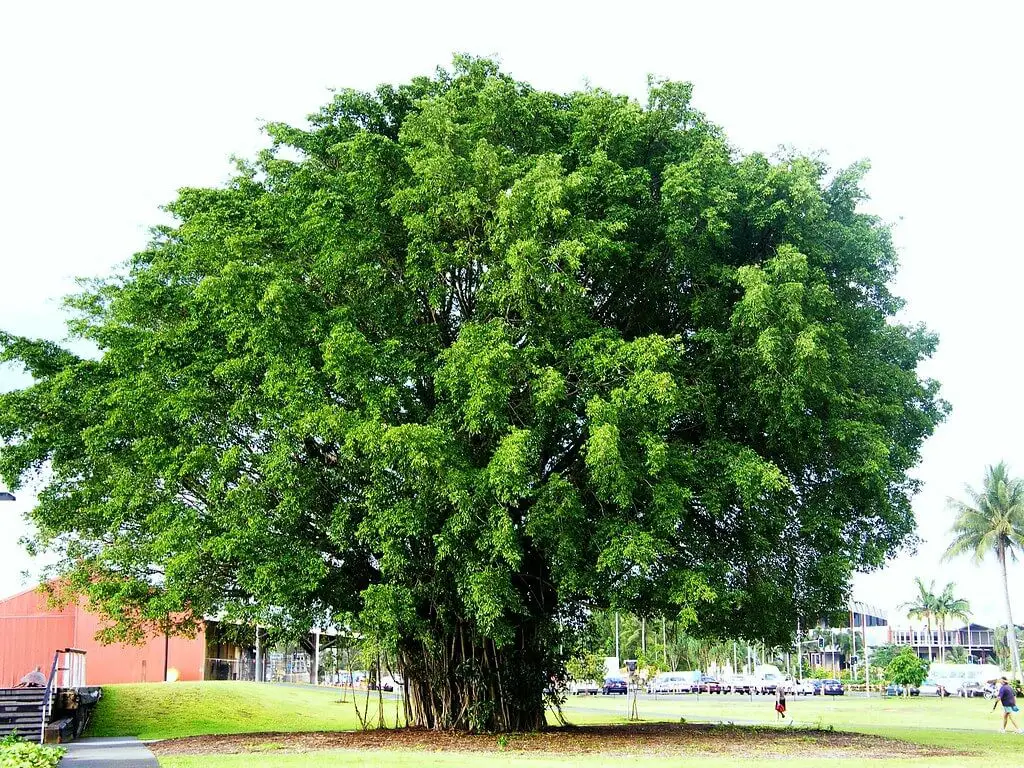
The fig tree is renowned for its ability to flourish in warmer climates, producing luscious fruits with a nutty flavor that holds significant cultural relevance within Judeo-Christian traditions. While they typically thrive in long summers, these versatile plants can also be successfully cultivated indoors in temperate and colder regions.
Among the most popular species is the common fig, which is particularly appealing to new homeowners due to its unique characteristic of not requiring pollinators for growth. In contrast, other fig cultivars are more challenging to grow, as they necessitate specific wasp pollinators. Notably, the fruits of these trees are often preserved and utilized as ingredients in various culinary applications.
Fir trees
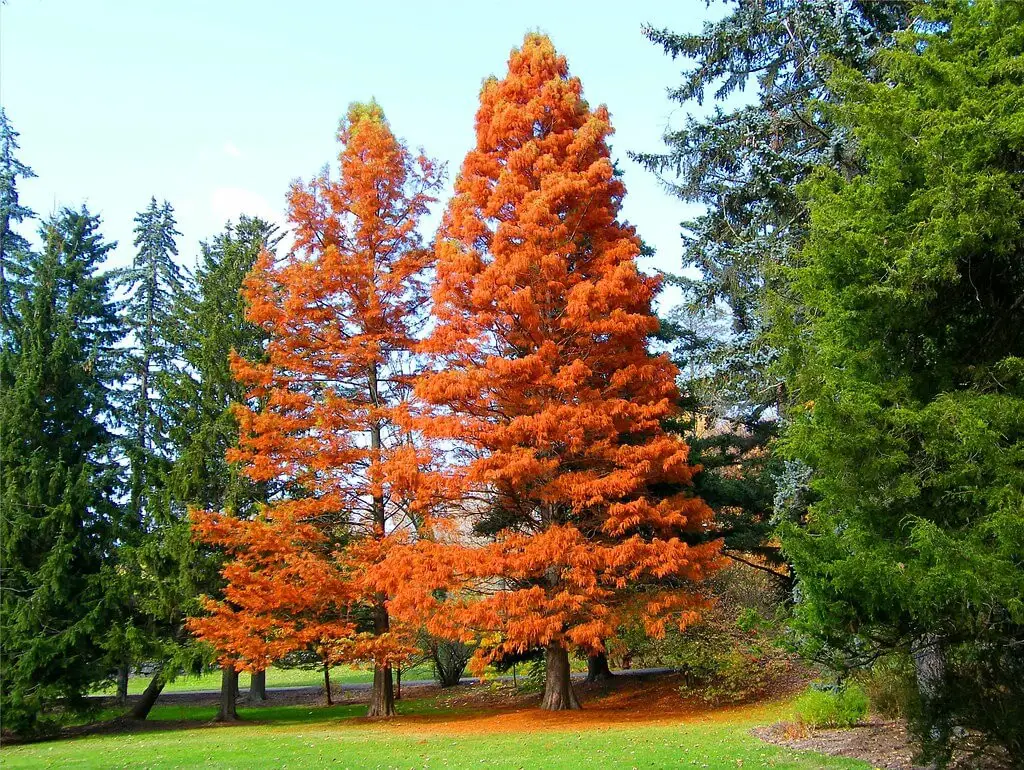
Fir trees have long been a staple in North America, particularly during the holiday season when they’re commonly sold as Christmas trees. Interestingly, there are over 55 species of fir trees, with Balsam and Fraser firs being two of the most well-known varieties. What’s noteworthy is that none of these trees can be grown into shrubs; instead, they naturally mature to reach impressive heights of up to 260 feet tall, with trunks growing as wide as 13 feet in diameter.
One of the distinctive features of fir trees is their pyramid-shaped appearance, which sets them apart from pines. Moreover, their cones are erect and winged, making them easy to identify.
Flowering trees
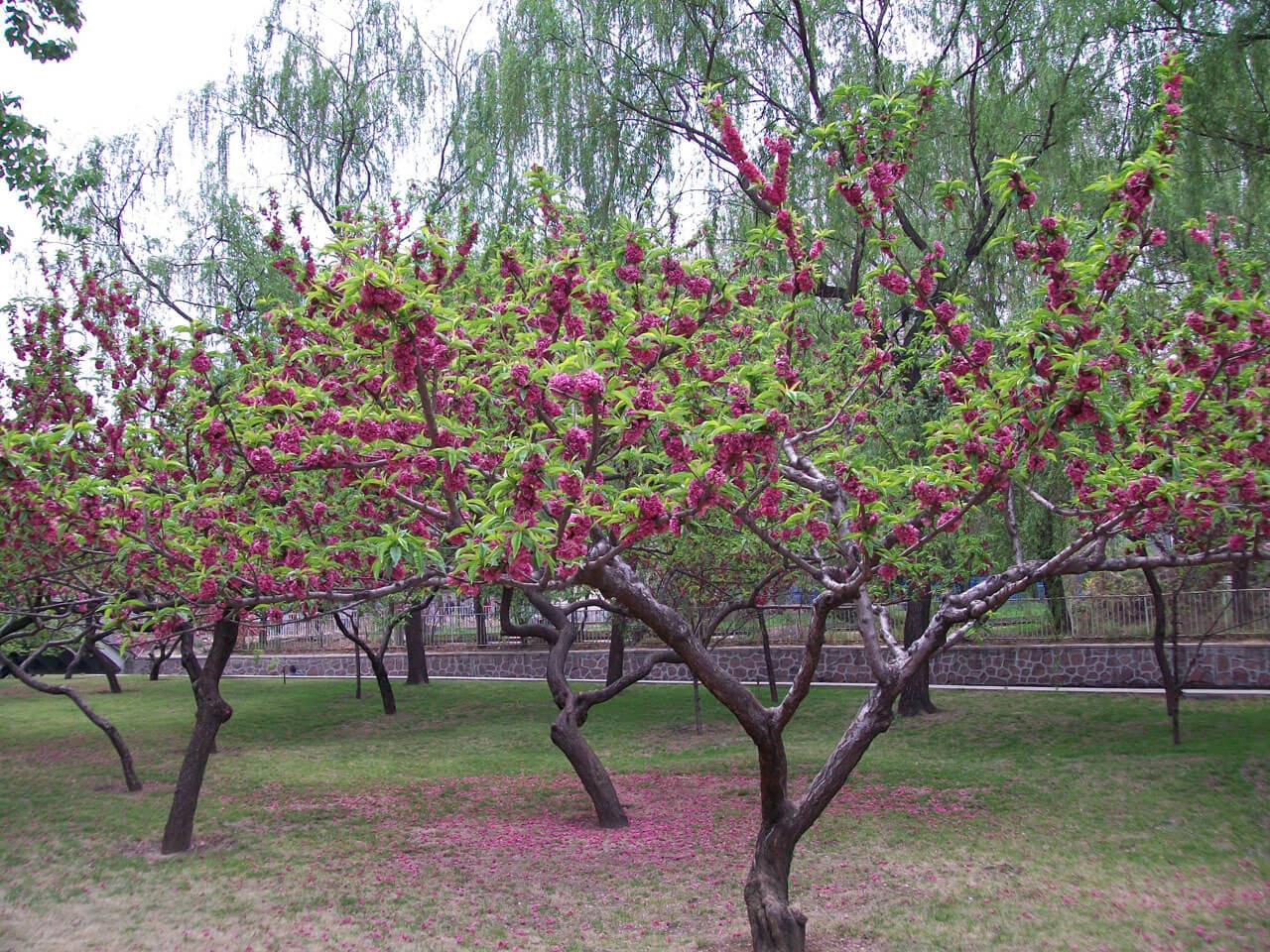
The term ‘flowering trees’ encompasses a range of tree species that produce blooms, with some varieties flowering only once (ornamentals) while others produce flowers that eventually ripen into fruits. Among these perennial bloomers, you’ll find Dogwoods, Redbuds, Cherries, and Fringes consistently producing vibrant displays throughout the year. Other notable mentions include Forsythia, Magnolias, and Flowering Crabapples, all of which are characterized by their stunning floral arrangements.
Fruit trees
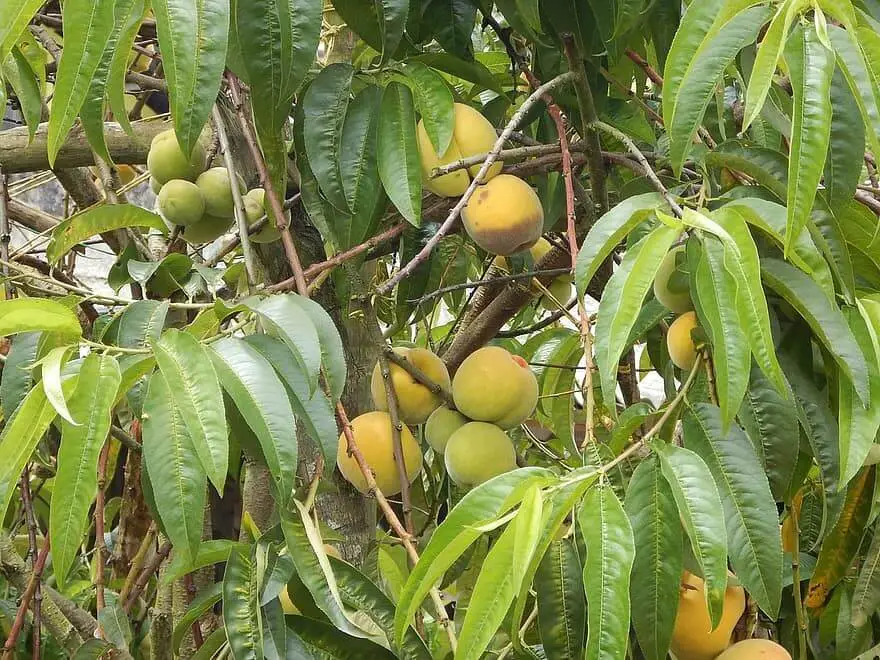
While many fruit tree species can tolerate a range of environmental conditions, most varieties will thrive in temperate climates with USDA Hardiness Zones 5-7. A key characteristic of fruit trees is their ability to produce flowers that eventually ripen into edible fruits. However, it’s essential to note that not all flowering trees are considered fruit trees – the term specifically refers to species that produce fruits intended for human consumption.
Once a fruit tree has been successfully established in its growing conditions, it will typically continue to bear fruit year after year with minimal maintenance requirements.
Hardwood trees
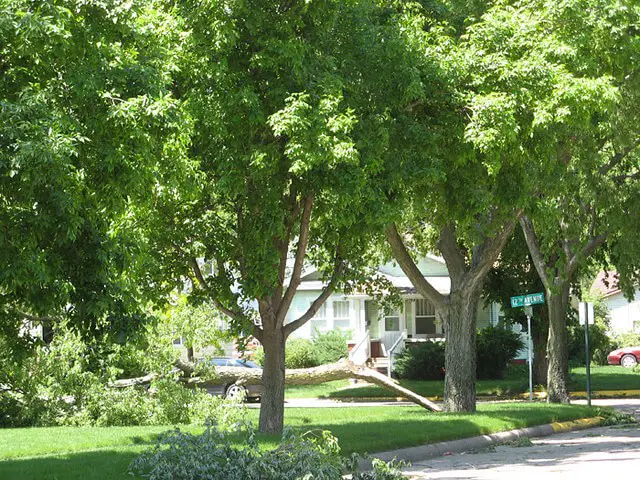
Hardwoods, a term often associated with sturdy and resilient trees, may seem counterintuitive at first glance. Despite sharing no physical similarities with their softwood counterparts, hardwoods indeed possess distinct characteristics that set them apart. One notable difference lies in their foliage: rather than sporting needle-like leaves, hardwoods boast larger, more robust leaves. Another distinguishing feature is the type of fruit they produce, commonly referred to as nuts.
Furthermore, unlike some species, hardwoods exhibit a unique dormancy during winter months, only to awaken when temperatures stabilize and spring arrives. A fascinating fact worth noting is that an astonishing 40% of North America’s tree population falls under the hardwood category.
Hawthorn trees
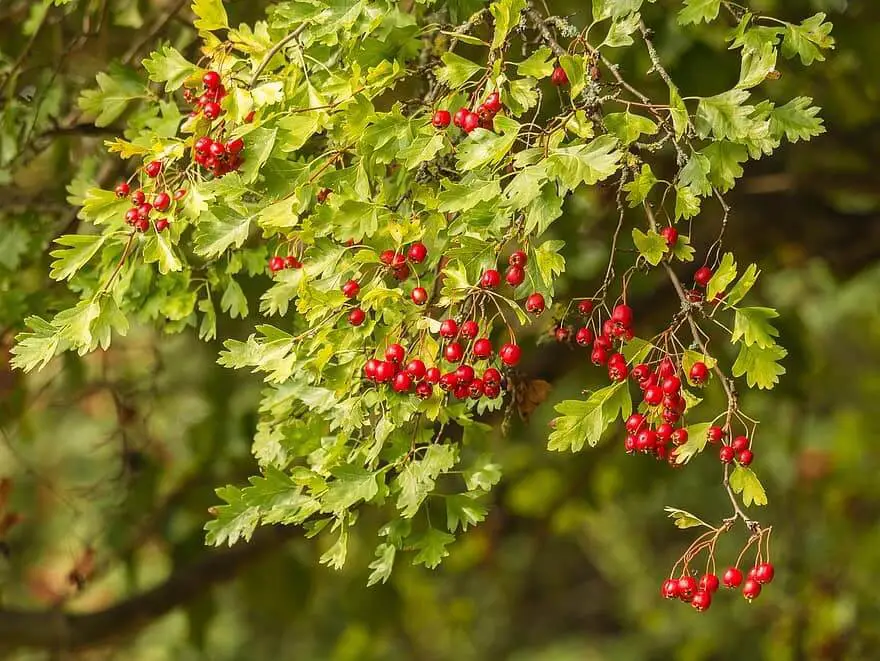
While seemingly diminutive, the Hawthorn tree actually comprises a significant number of species that are united by their distinctive fruits and blossoms. One characteristic that defines all Hawthorn trees is their rugged, scaly bark which often appears in shades of brown or gray. Additionally, they feature small, uncomplicated leaves that blend seamlessly into the surrounding environment.
As a result, Hawthorn trees are commonly utilized as shrubs in landscaping projects, as well as for various commercial applications.
Hickory trees
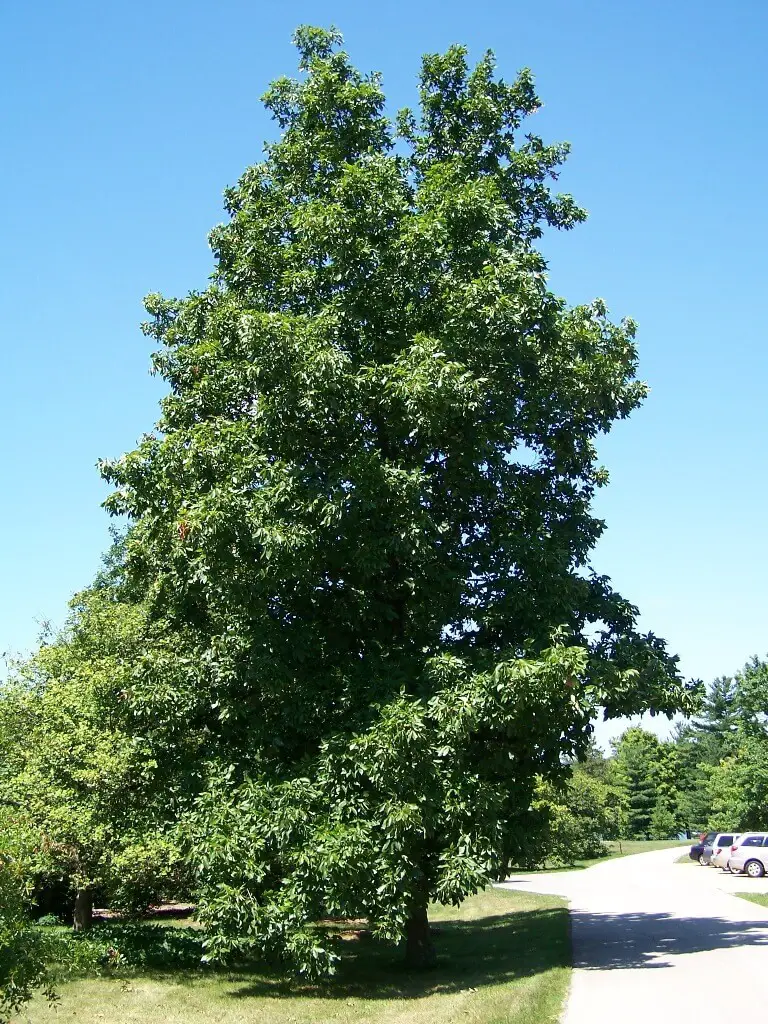
The hickory trees, with their sturdy, dark brown trunks, can be found in lines within state parks and large gardens. The species is divided into two main categories: true hickories and pecan hickories. Notably, the pecan hickory is the only one with commercial value due to its valuable timber production. All hickories share distinct oblong-shaped leaves that transform from deep green to yellow during autumn. They also boast gray-brown bark that peels as they mature.
One of their most impressive features is their remarkable longevity, with some species capable of living for up to 300 years.
Juniper trees
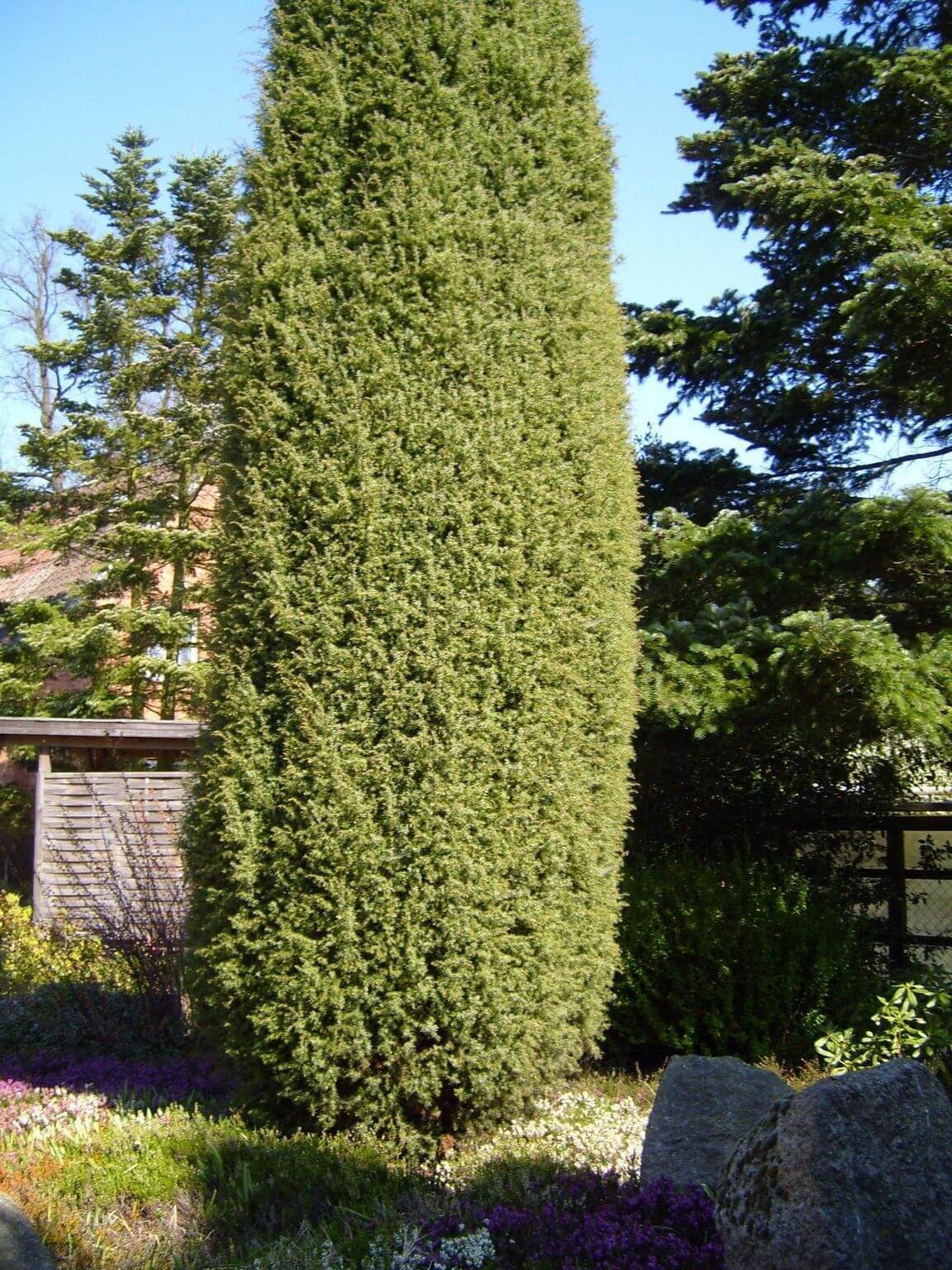
While the common juniper is the only species that inhabits both North America and Europe, this resilient tree thrives in arid regions worldwide, boasting an impressive 70 distinct species. Notably, most juniper varieties exhibit two types of leaves: awl-like and scale-like, although some species may only display one type. This adaptability has contributed to their value for timber production, as the trees produce small rings that are highly sought after.
Moreover, junipers are renowned for their remarkable longevity, with documented records of Rocky Mountain junipers dating back an astonishing 2,000 years.
Lilac trees
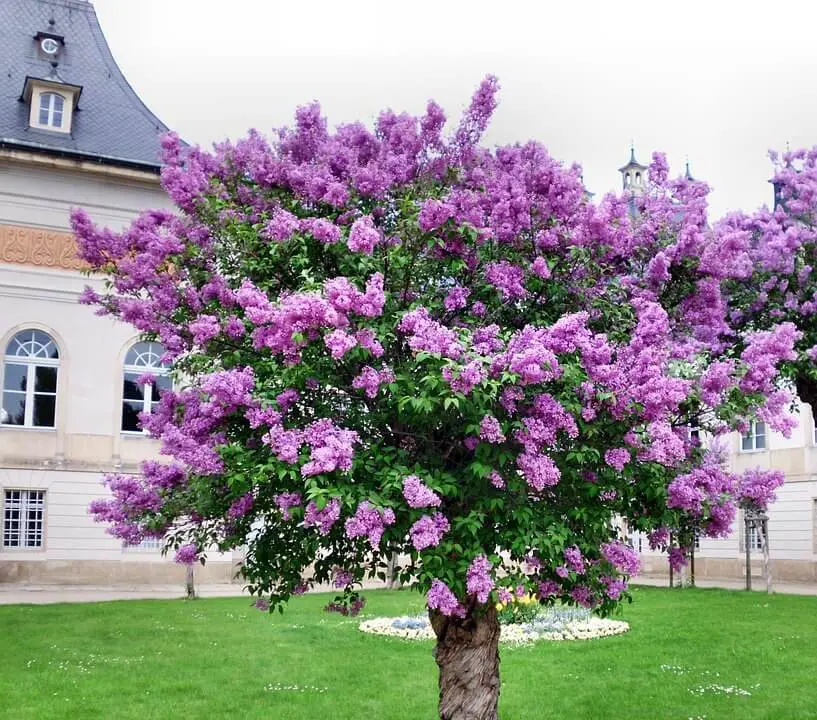
Lilacs can thrive as either a shrub or tree form, with two distinct categories emerging from further classification. One type, known as upright lilacs or common lilacs, is celebrated for its broad palette of colors and varied fragrance profiles. In contrast, densely branched lilacs are prized for their ability to produce masses of blooms in even the most confined spaces.
Notably, the Manchurian and Meyer varieties are particularly popular among this densely branched subset, showcasing the unique characteristics that set them apart from other lilac types.
Lime trees
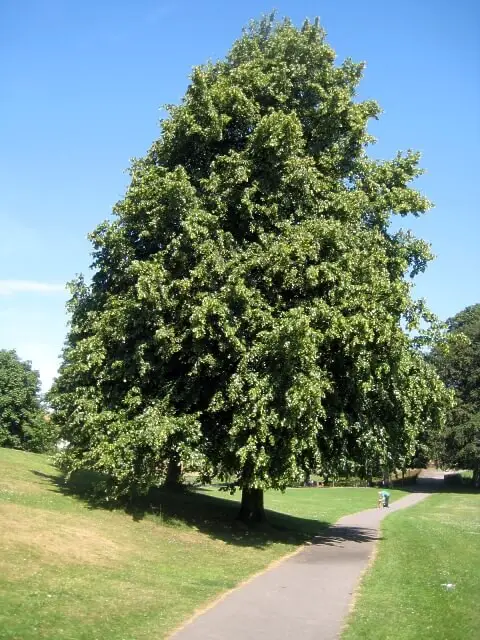
The citron tree boasts an impressive array of over 80 cultivars and hybrids within its family. Its fruit-bearing capabilities are a significant draw, as the sweet, tangy produce is not only edible but also highly prized. The Mexican lime variety stands out for its economic significance, with applications in culinary arts, beverages, and confectionery industries alike. Beyond their culinary uses, citron peels are commonly processed and dried for various purposes across Asia and the Americas.
In terms of physical characteristics, these trees often feature irregularly branching twigs, small, glossy leaves, and thorns along their stems.
Locust trees
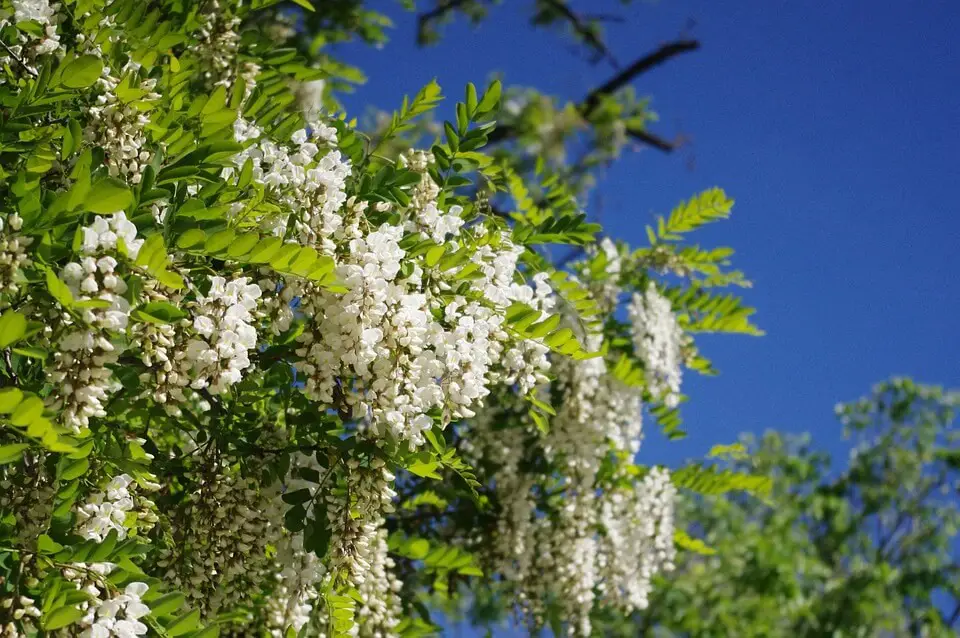
From the pea family, this type of locust can thrive in shrubs and trees. Native to all regions in North America, locust species are valued for their versatility, serving multiple purposes such as erosion control and ornamental gardening. The striking white flowers of these plants also make them a popular choice for hedges. Notably, the black locust tree is the most widely cultivated variety.
Mahogany trees
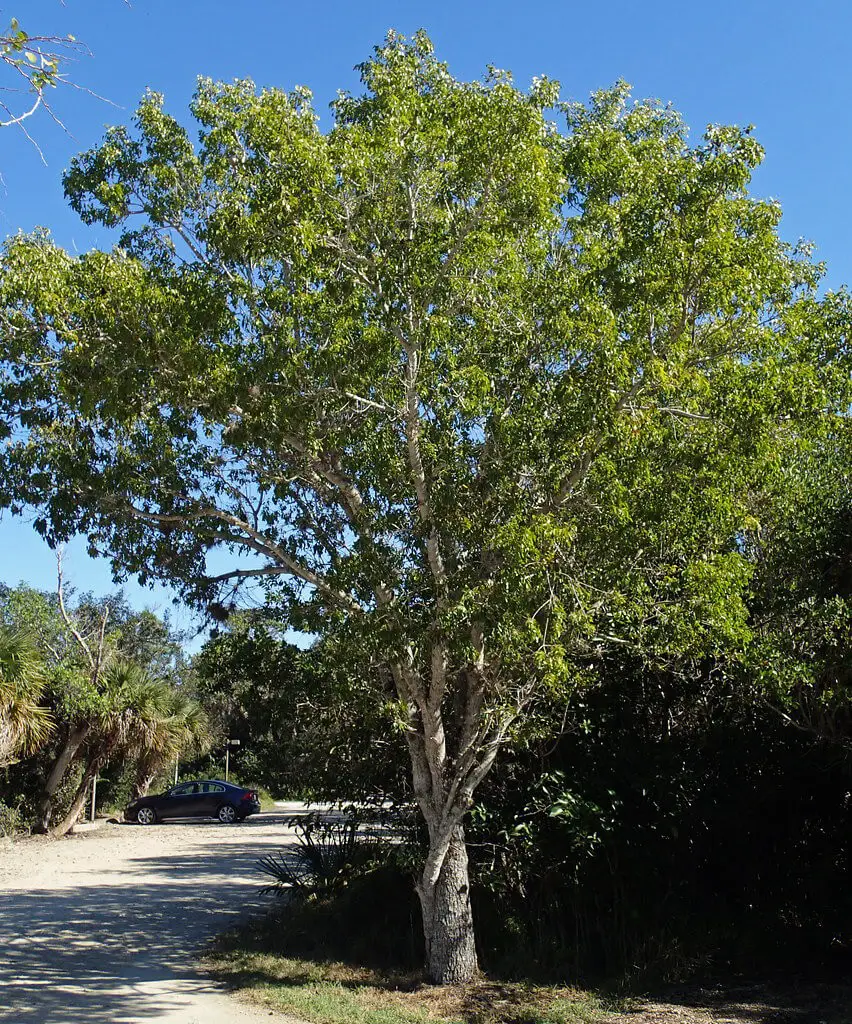
This evergreen tree boasts a unique combination of characteristics that make it highly valuable. Its small, pointy leaves and hard fruits are just the beginning. Native to southeast Asia, the Caribbean, and south Florida, this species has adapted to thrive in various environments. One of its most distinctive features is its sturdy, thin trunk, which is covered in gray bark that gradually darkens as the tree matures.
This prized trait has earned it a reputation as one of the most sought-after industrial trees due to its rich brown color. The versatility of this tree is further demonstrated by its use in manufacturing musical instruments, boats, caskets, and furniture. Moreover, its bark holds a surprising secret: it can be scrubbed for its potency as an astringent.
Mango trees
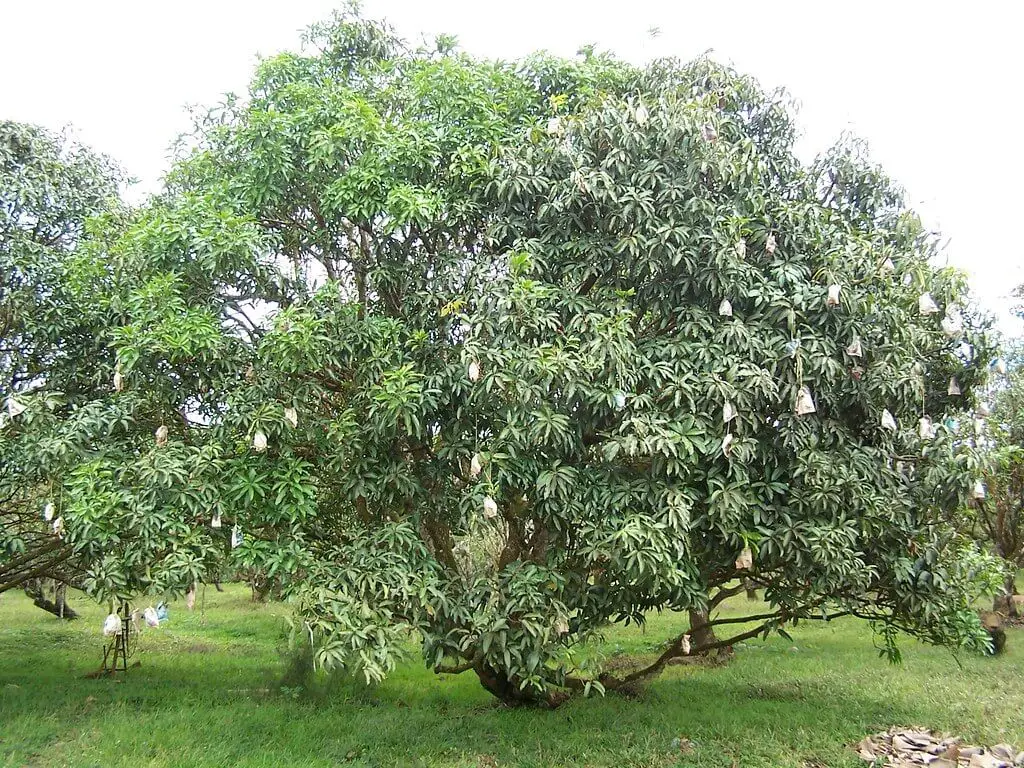
Tropical mango trees are renowned for their sensitivity to temperature, as temperatures below 30 degrees can cause significant damage to the tree’s trunk and fruit. In ideal conditions, these trees can grow remarkably tall, reaching heights of up to 100 feet and providing a broad canopy of foliage at around 35 feet.
The leaves of the mango tree are characterized by their elongated, pointed shape and leathery texture, while small, yellow flowers with a sweet fragrance bloom before giving way to fruit. Interestingly, the stems of mango trees that receive sufficient light tend to turn red, whereas those receiving less than 6 hours of sunlight per day develop brown-black bark.
Maple trees
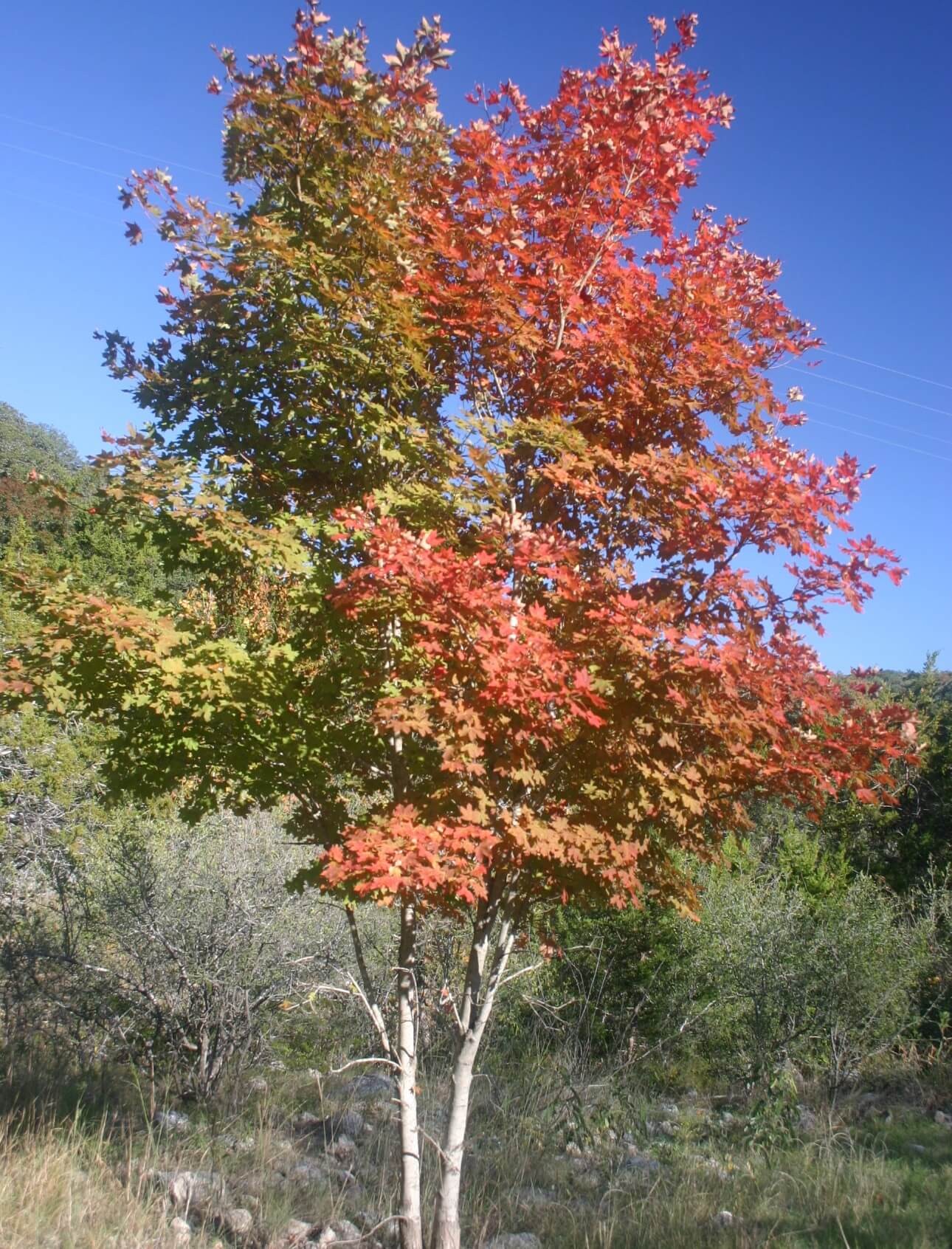
The North American forest tree group known as the maples are touted as the most significant in the region. These trees play a crucial role in wildlife conservation efforts due to their valuable woodlands. Moreover, they are highly prized for their aesthetic appeal in forests.
One of the most renowned maple species is the sugar maple, which happens to be the source of maple syrup.
Interestingly, the bark color of these trees can vary depending on the specific type, but it’s their distinctive arrangement and coloration of twigs, buds, and leaves that truly set them apart.
Mulberry trees
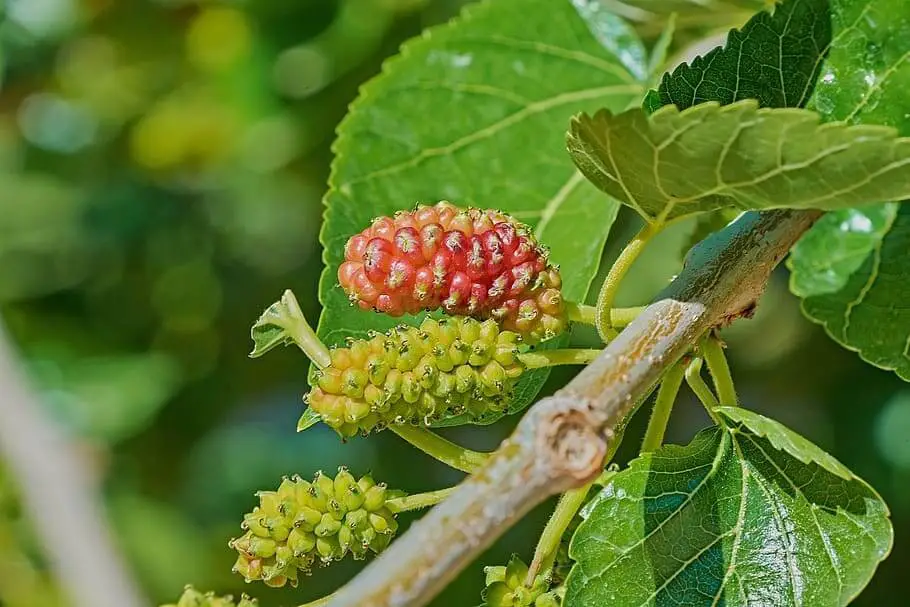
Mulberry trees have gained widespread recognition for their striking visual appeal and succulent fruits that are often used in baked goods like tarts and pies, as well as fermented into wine. However, this popularity is tempered by the fact that these trees are also favored by insects, butterflies, and pests, which can lead to their demise. Additionally, mulberries have a tendency to become invasive, further contributing to their decline.
Interestingly, the black and red species of mulberries are particularly renowned for their unique characteristics.
Oak trees
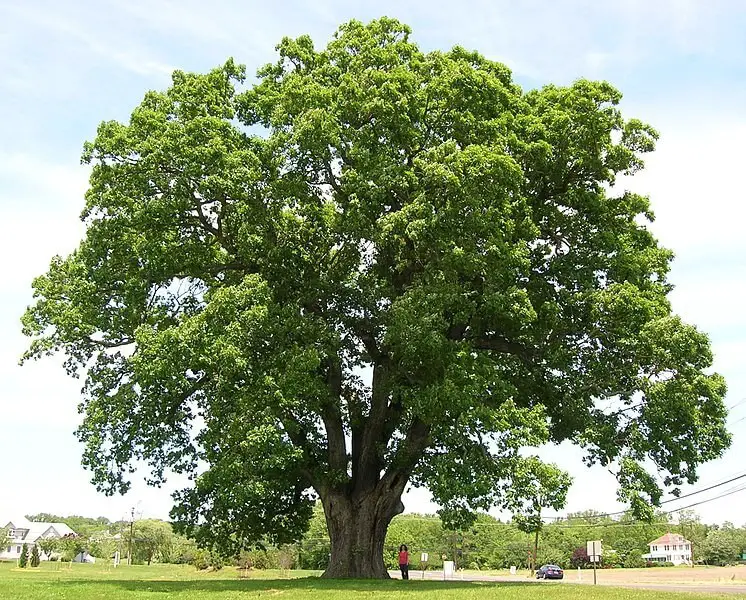
New York City is home to an astonishing array of oak species, with a staggering 300 known varieties calling the city their own. Of these, a significant 55 hail from North America, showcasing the region’s rich botanical heritage. The oak family is broadly categorized into two primary groups: black oaks and white oaks. A key distinguishing feature between the two is the taste of their acorns – sweet for white oaks, bitter for black oaks.
Furthermore, white oaks are characterized by smooth leaves, while black oaks sport bristled foliage. These adaptable trees thrive in a variety of environments, from dense forests to scenic valleys, underscoring their remarkable resilience and ability to flourish in diverse ecosystems.
Palm trees
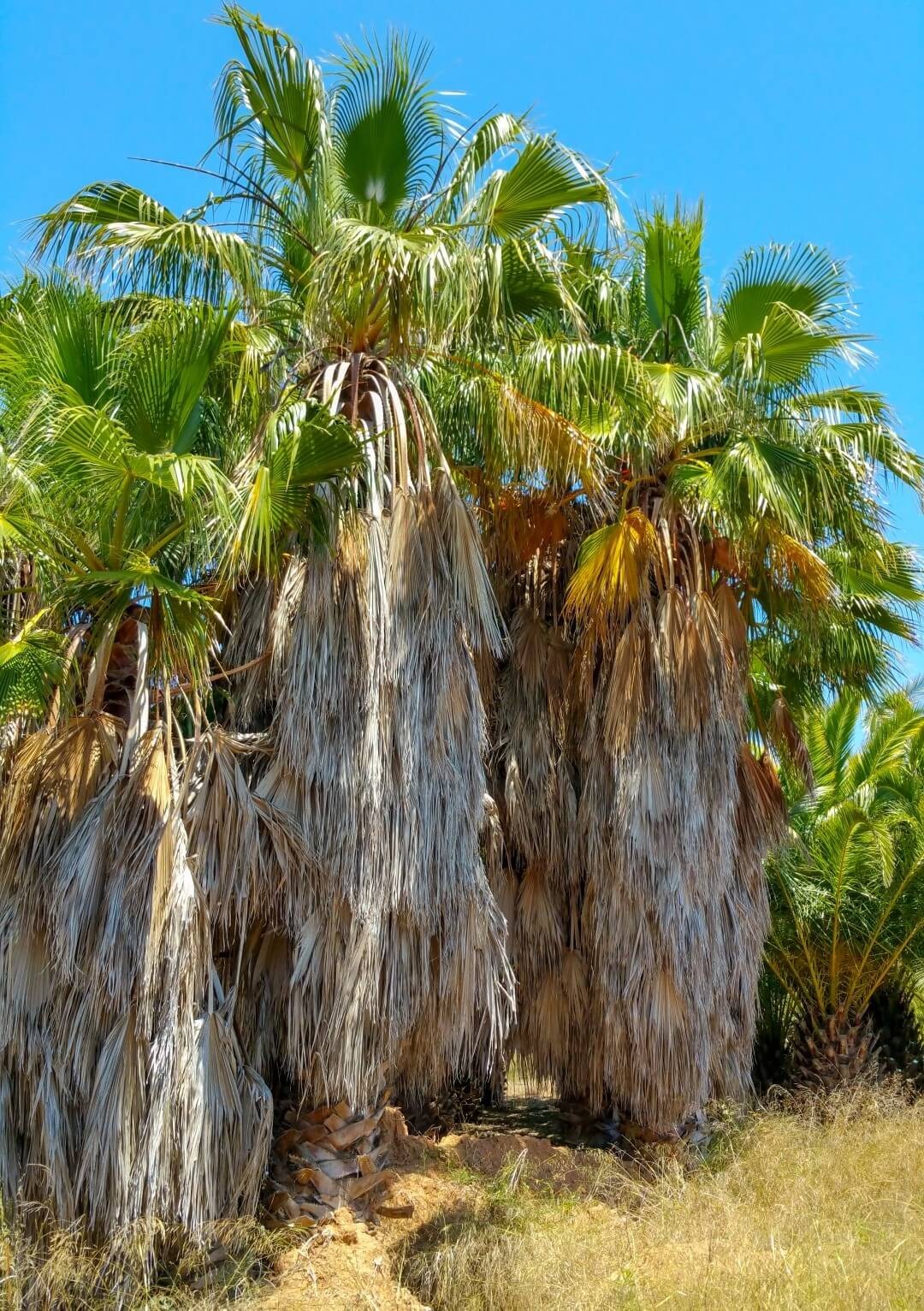
Palm trees, with over 2600 species, are a staple in many tropical regions. Not only do they provide a wealth of benefits through their fruits, wood, oil, and fuel, but they’re also a popular choice for landscaping due to their ease of cultivation. You’ll find them commonly gracing parks, coastal boulevards, and hotels in frost-free regions. Beyond their practical uses, palm trees hold significant symbolic meaning across various cultures and traditions.
In Florida alone, you can find a diverse range of palm tree species, each with its unique characteristics and care requirements. From the Pygmy Date Palm to the Chinese Fan Palm and European Fan Palm, there’s a wealth of information available for those looking to cultivate these iconic trees. With so many options to choose from, it’s no wonder that palm tree landscaping is an art form in itself, offering endless possibilities for design and creativity.
Pear trees
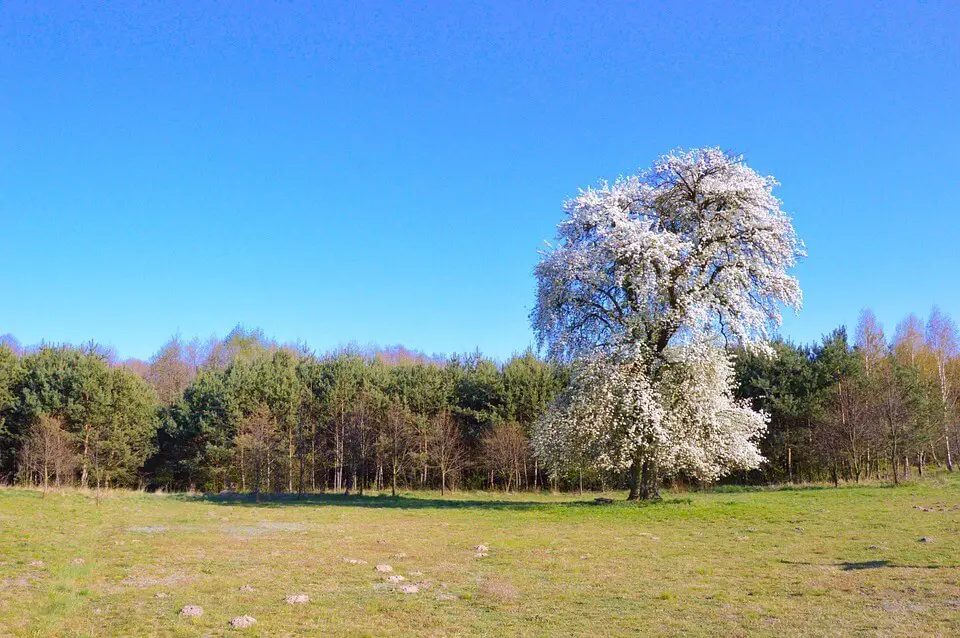
Pears are a highly versatile tree species that has made them a favorite among homeowners looking to establish an orchard. The fruit itself is incredibly versatile, with its fleshy texture making it perfect for consumption raw or as a sweet addition to pastries, ciders, and savory dishes alike. Furthermore, the sturdy and fine-grained wood of the pear tree makes it an ideal choice for various woodworking applications, including timber production and furniture crafting.
As such, it’s no surprise that several popular varieties have emerged, with Bartlett, Comice, Concorde, D’Anjou, and Seckel being some of the most widely recognized and commercially successful types.
Pecan trees
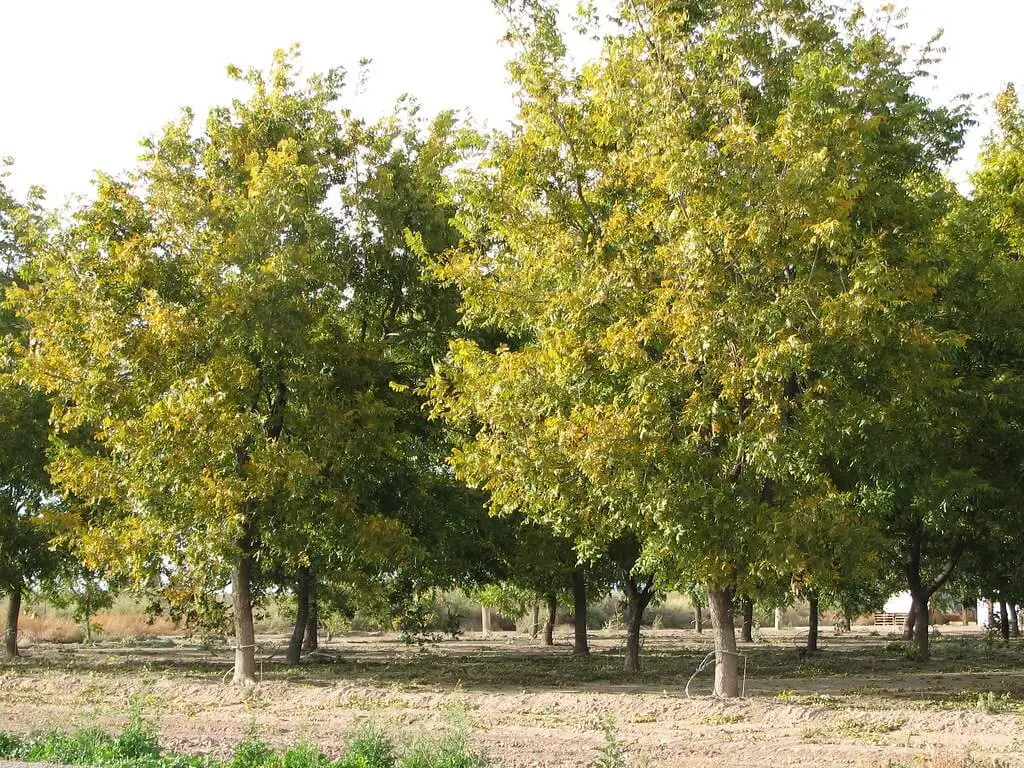
Pecan trees are renowned for producing delicious nuts that are often incorporated into baked goods and savory dishes. However, one drawback to these trees is their tendency to shed foliage, twigs, and fruit in abundance during the fall season, which can lead to a messy environment.
In its natural habitat, the pecan tree can grow up to 130 feet tall, with trunks reaching diameters of 75 feet.
Its impressive size allows it to thrive in various regions, particularly in the southern United States, where states such as Texas, Oklahoma, Mississippi, Indiana, Kansas, and Missouri are home to these majestic trees.
Pine trees
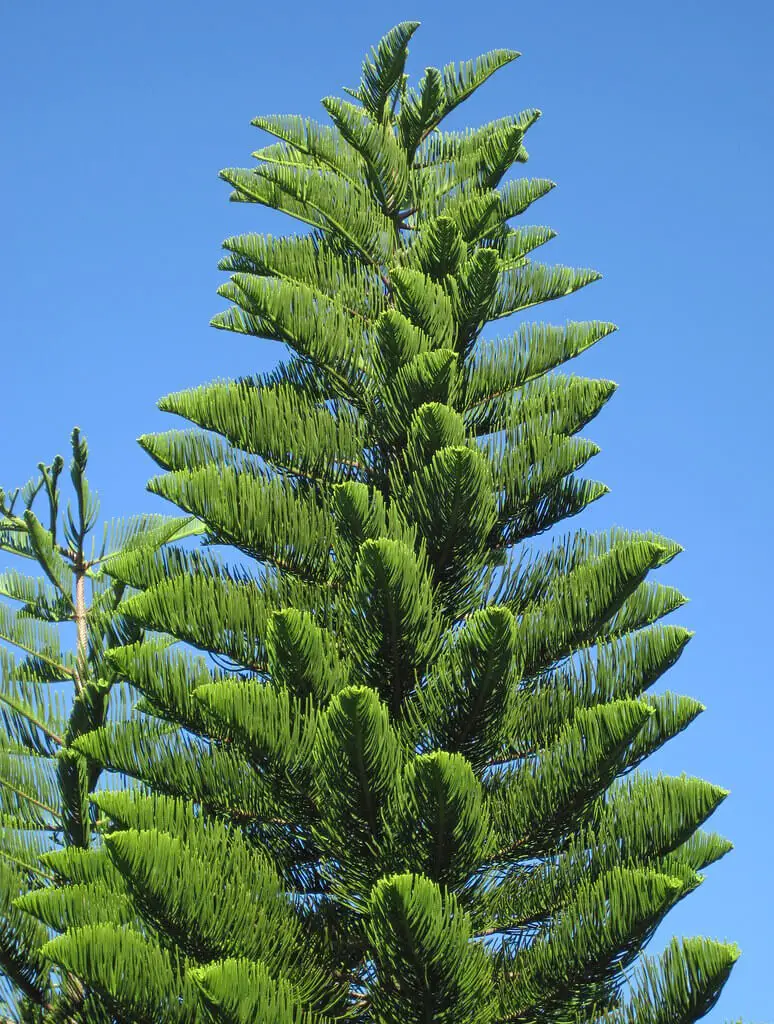
Pines are renowned for being some of the most widely planted tree species globally. In colder climates, they’re often used as an alternative to traditional Christmas trees. Characterized by their distinctive cone-shaped appearance and fine, needle-like foliage, pines have over 250 distinct types within their cluster. The timber industry is a significant beneficiary of their economic value.
Notably, these trees are relatively low-maintenance, thriving in challenging conditions such as acidic or nutrient-poor soils. At maturity, they’re capable of providing robust canopies, solidifying their reputation as iconic evergreens.
Plum trees
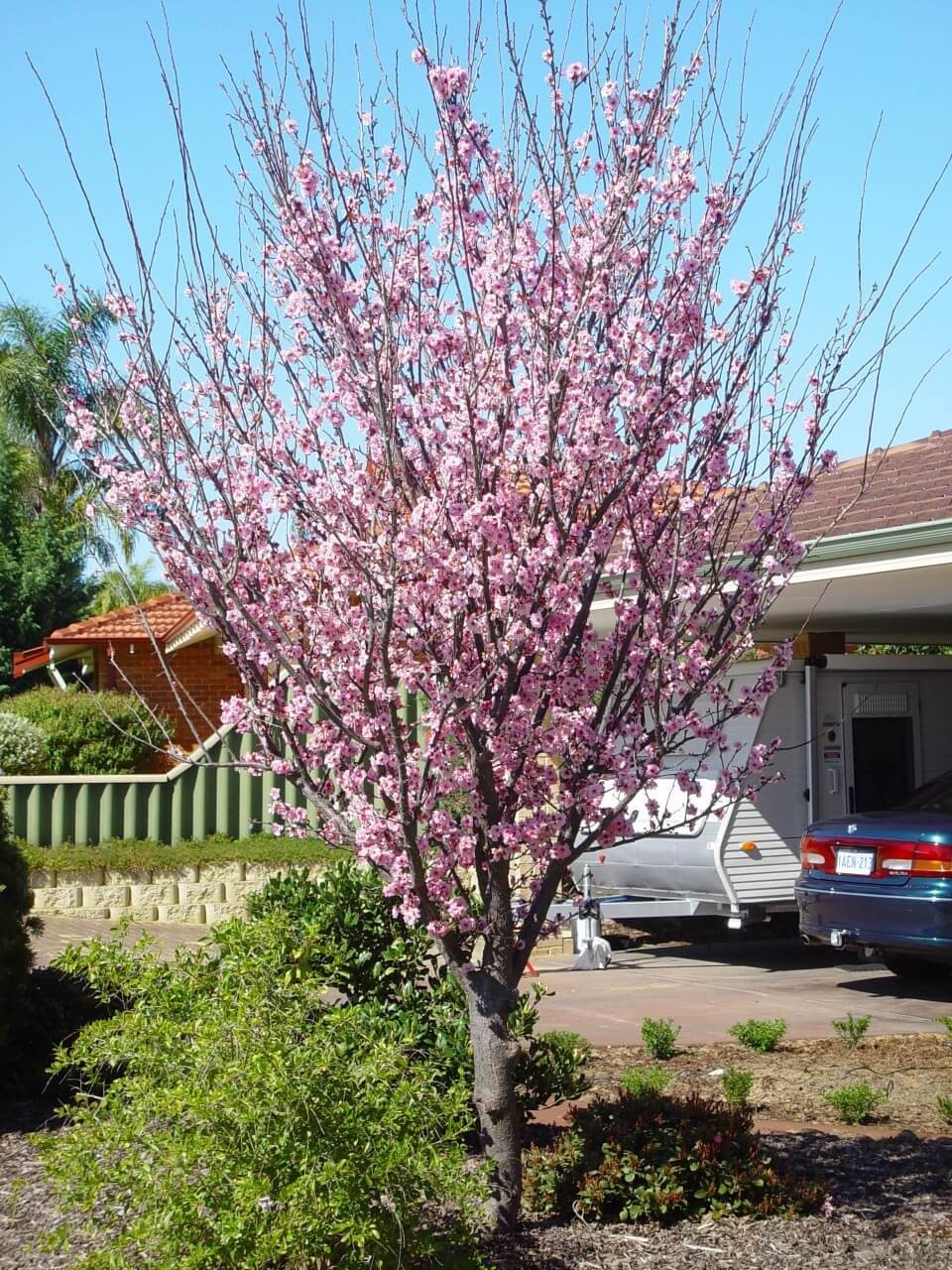
While many people are familiar with plum trees as a source of delicious fruits, fewer may know about their stunning floral displays. Ornamental plum trees burst forth with vibrant purple and white flowers in the spring, offering a breathtaking sight. In contrast, fruiting plum trees are more commonly recognized for producing edible fruits that can be enjoyed raw or used as ingredients in various dishes. The fruits are often fermented to create cider or wine.
Fruiting plums also feature ovate leaves that transition from deep green during spring and summer to orange, yellow, or purple-red hues in the fall.
Redbud trees
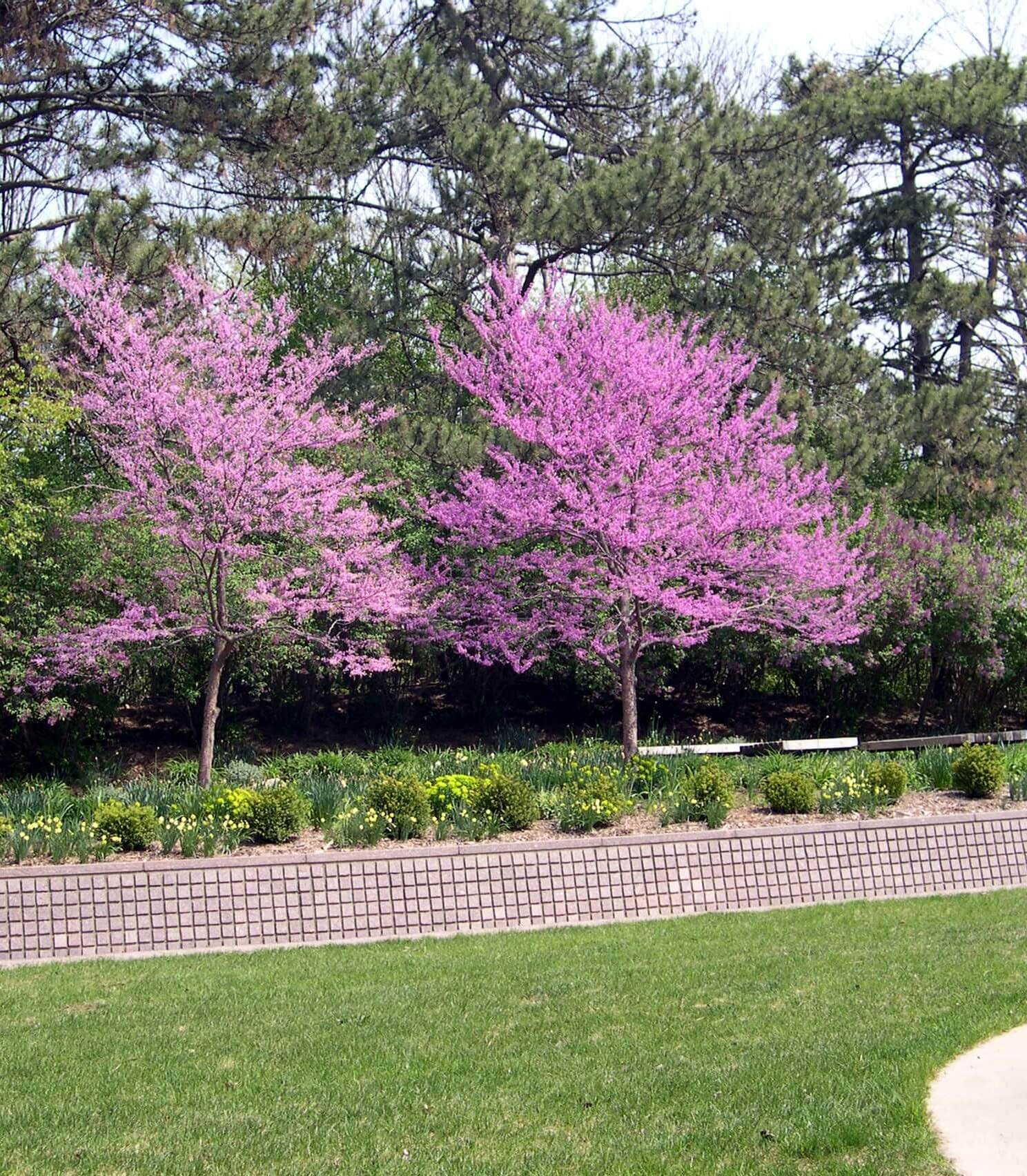
Eastern redbud trees have garnered the nickname ‘Judas tree’ due to a fascinating historical connection – according to biblical scholars, it was an eastern redbud where Judas Iscariot allegedly took his own life. Beyond this intriguing fact, these trees are also prized for their stunning ornamental value. In the spring, they burst forth with vibrant, papery flowers in shades of lavender and white, which add a touch of drama to any landscape.
The tree’s unique features don’t stop there – its leaves have a distinctive heart shape, while its stems stretch long and slender. Although their blooming period is relatively brief compared to other ornamental trees, they still offer plenty of visual interest. Interestingly, eastern redbuds are not particularly large, reaching a maximum height of 30 feet and spreading 20 feet in width. The tree’s bark is soft and brown, with a naturally divided trunk that adds to its natural charm.
Redwood trees
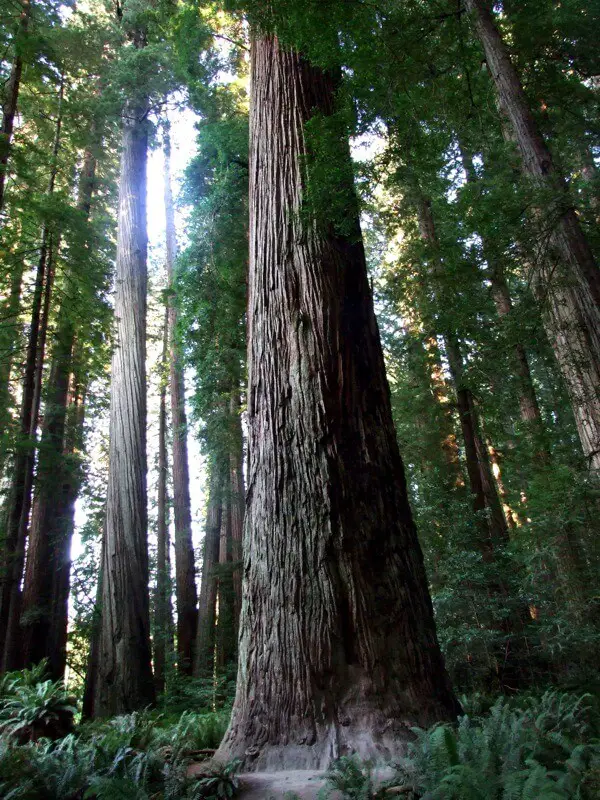
Redwoods are often referred to as nature’s skyscrapers due to their impressive stature, with some species reaching mature heights of over 250 feet and diameters of up to 30 feet. These towering trees are predominantly found in Oregon, Washington, and Northern California. One of the most striking features of redwoods is their distinctive cinnamon-red bark, a characteristic that sets them apart from other tree species.
Additionally, redwoods are known for their remarkable longevity, with some specimens, such as those in Sequoia National Park, estimated to be over 3,500 years old.
Spruce trees
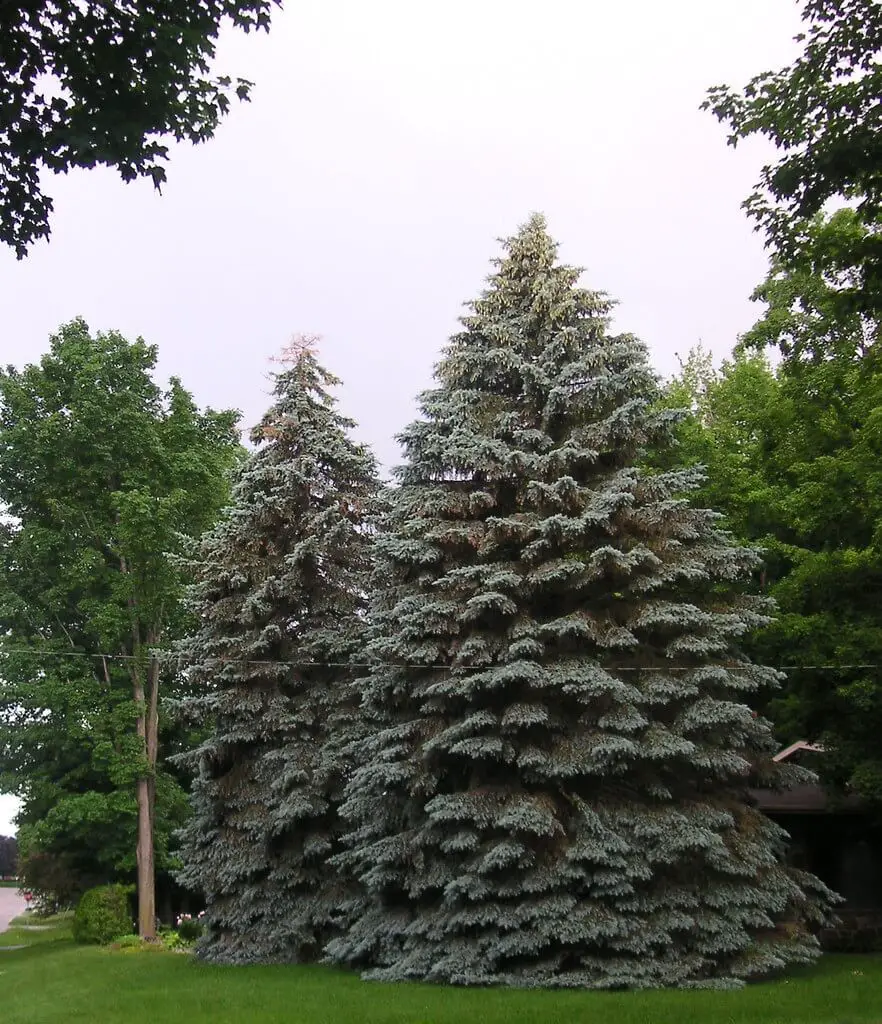
Spruces, with their impressive 40-plus species, can be cultivated as both full-grown trees and ornamental plants. As a popular alternative to traditional Christmas trees, they bring festive charm to winter landscapes. What’s more, spruces share a familial connection with pines, belonging to the same Pinaceae family and originating from North America and the northern hemisphere.
Beyond their aesthetic appeal, spruces hold significant economic value as the primary source of paper and timber production. Their versatility extends to manufacturing musical instruments, such as violins and pianos, as well as industrial applications in boat-building, barrel-making, and aircraft construction.
Weeping willow trees
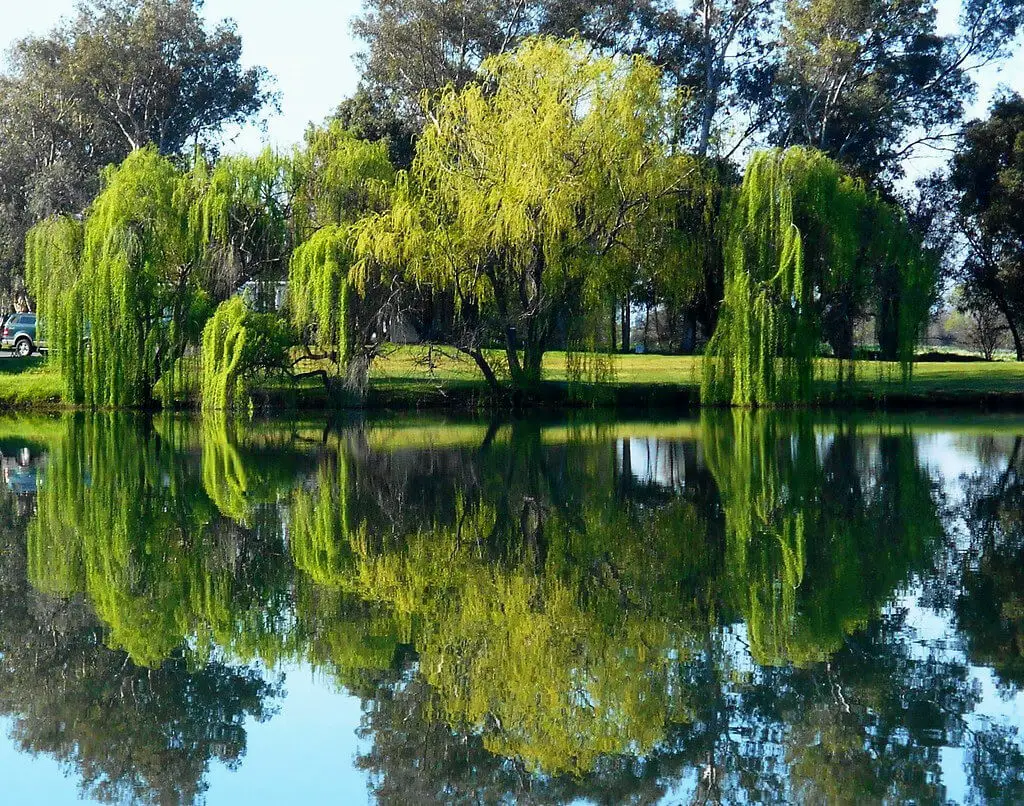
The majestic Weeping Willow tree, native to northern regions, is one of the most iconic species globally. Its distinctive, curved silhouette and delicate, tear-drop shaped foliage evoke a sense of whimsy and elegance. Beyond its utilitarian purposes, the Weeping Willow has also left an indelible mark on popular culture, featuring prominently in films, literature, and religious traditions.
The tree’s common name stems from its unique, drooping foliage that resembles tear drops.
Interestingly, the Bible references the species in Psalm 137, describing its presence in the rivers of Babylon. This iconic tree has also appeared in notable works such as Lord of the Rings, Game of Thrones, and Pocahontas, cementing its status as a cultural icon.
Sycamore trees
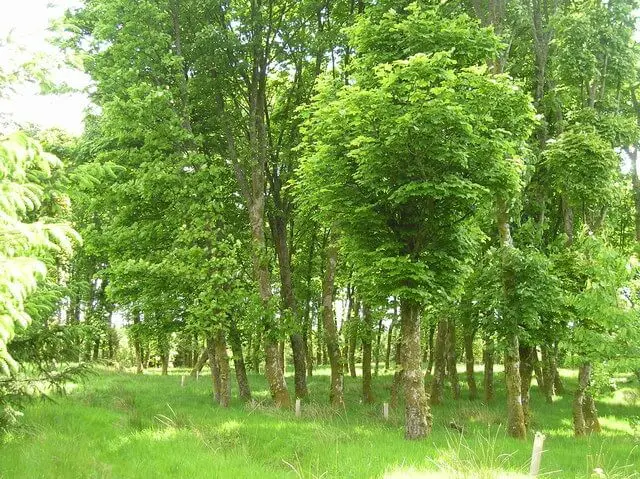
In certain regions, you can find these deciduous trees thriving in streams, river bottoms, and damp woodlands. The wood itself has a unique texture – it’s tough and relatively hard, yet not overly strong. Its coarsely grained structure makes it challenging to work with, requiring skilled craftsmen to shape and mold it. One of its most striking features is the bark, which undergoes an intriguing transformation from dark brown at the bottom to a yellow-green hue towards the top.
This distinctive bark peels back to reveal its inner layers. While it may be demanding to work with, this wood has a special place in various applications, such as crafting crates, tobacco boxes, and butchers’ blocks. Interestingly, it also holds significance in Judeo-Christian traditions, underscoring its importance beyond just its practical uses.
Teak trees
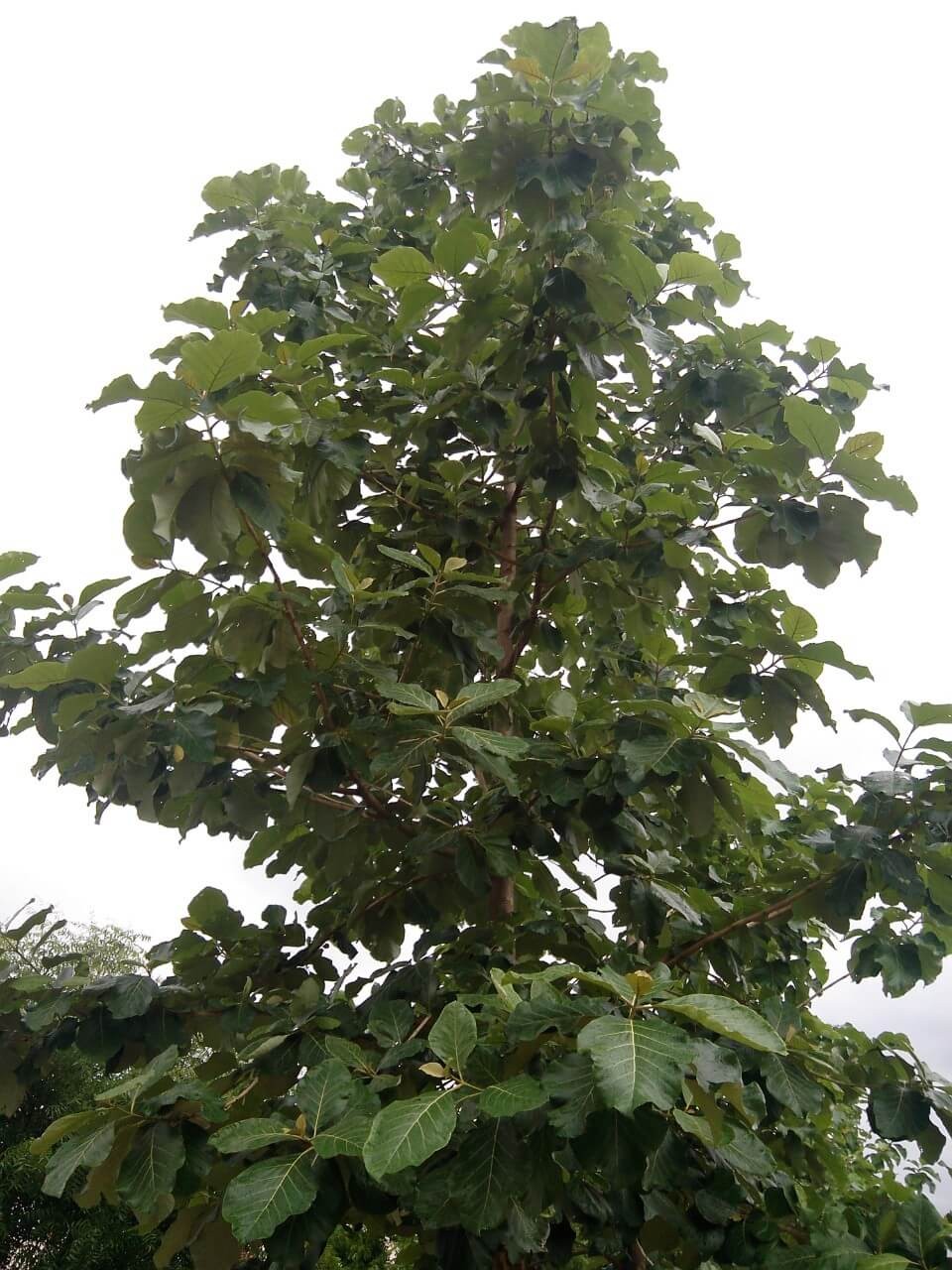
This towering evergreen has the potential to reach heights of up to 30 feet. Characterized by its large leaves, which resemble tobacco but with a distinctive white-blue hue, it also produces small, brown fruits with a papery texture. One notable feature is the light brown bark, adorned with white- and gray-toned furrows that have been used traditionally in the treatment of fever and headache.
The wood itself has a range of practical applications, including use in woodworking for crafting items such as boats, windows, and doors.
Walnut trees
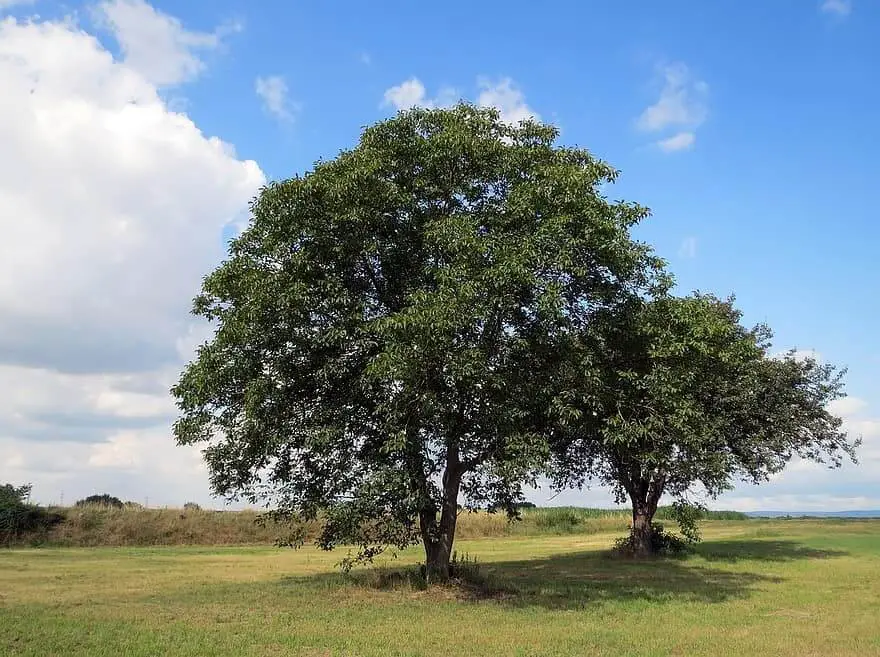
The walnut tree’s popularity stems largely from the valued nuts it produces. However, its timber is also highly prized due to its exceptional quality. The wood is sturdy, durable, and heavy, making it a pleasure to work with in woodworking applications. Its rich brown color has led to widespread use in high-end furniture production, as well as interior fixtures, cabinets, and gunstocks.
Interestingly, the tree’s outer bark features a distinctive black color with gray furrows, while its inner bark is a dark brown hue.
Willow trees
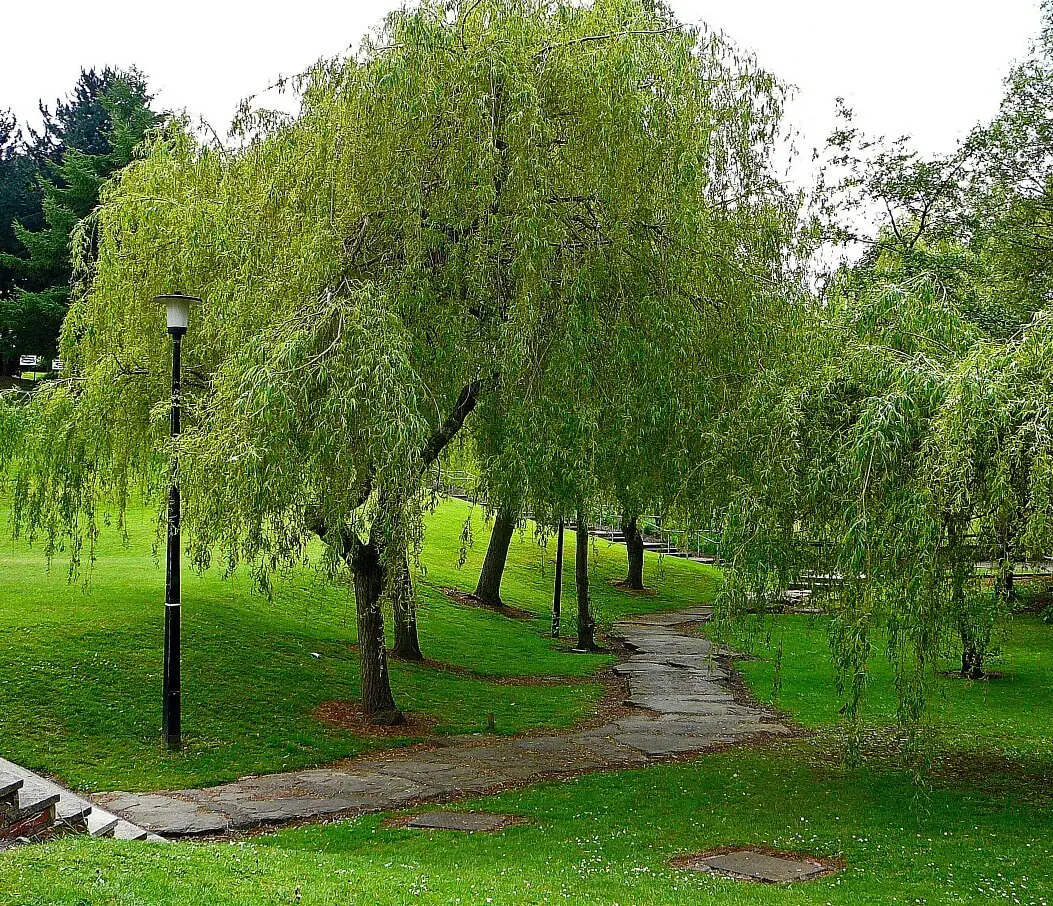
The Willow tree, a deciduous species, thrives in environments that provide adequate moisture. Its preferred habitats include streams, lakes, and dense forest regions where the air is humid. This arboreal beauty is characterized by its distinctive black or brown bark, adorned with thick, rugged scales. The rustling of its leaves creates an otherworldly ambiance, setting it apart from its peers.
Despite its soft and crooked trunk making it unsuitable for timber production, the Willow tree has several practical uses. Its wood is often used to craft boxes and pulp products. Moreover, its cultural significance is undeniable, having been featured prominently in iconic movies like Lord of the Rings and Pocahontas.
Conclusion
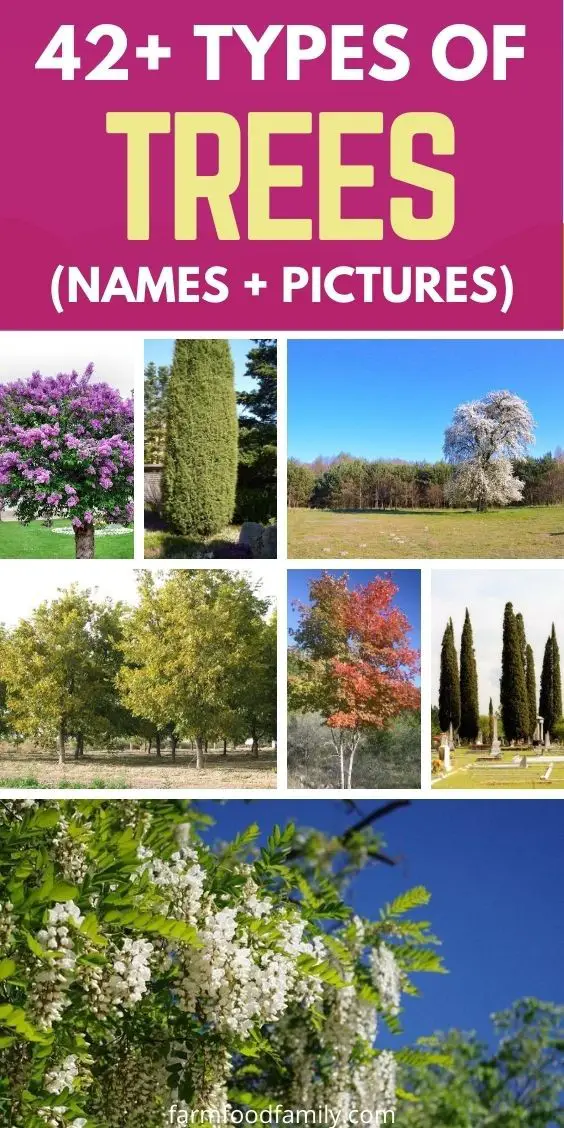
To effectively navigate the world of trees, it’s essential to develop a solid understanding of their fundamental characteristics. This includes being able to identify basic traits such as growth habits, rooting types, bark colors, and whether they’re evergreen or deciduous. Additionally, having insight into the specific growing conditions each type requires is crucial for success in landscape design and homeowner applications.
Furthermore, knowing the native habitats of various tree species can provide valuable insights into their ideal environments and regions where they’ll thrive best. Ultimately, mastering the different types of trees is a fundamental aspect of informed decision-making for both professionals and homeowners alike.
Related Posts
Discovering the world of online plant nurseries, one can find an astonishing array of tree varieties. From apple trees to evergreens, each species offers unique characteristics and benefits. However, it’s not just about planting trees – becoming an arborist requires dedication and a passion for tree care. Not only do trees impact our properties, but they also play a crucial role in boosting our homes’ appeal. Sometimes, the removal of trees can have a similar effect.
But did you know that growing organic blueberry plants is not only delicious but also beneficial? And what about Cleveland pear trees – an excellent alternative to Bradford pears?


